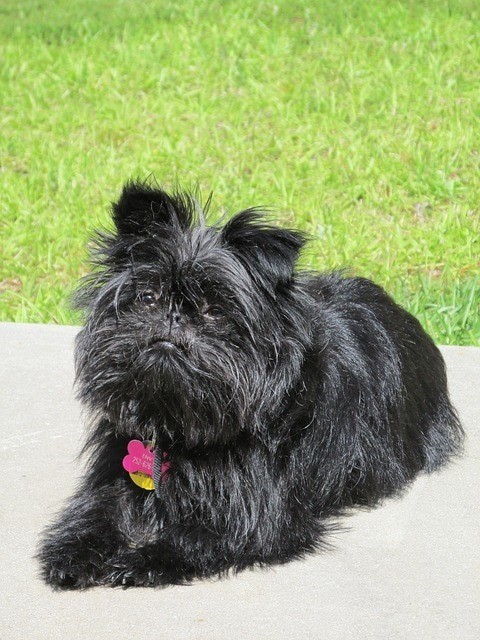
The Affenpincher is a robust little dog with a rounded skull, flat nose and lustrous eyes which give it a monkey-like appearance.
This is a lively, cheerful, friendly, alert, undaunting, dependent and sharp-witted dog, with an impish personality which makes it a great dog for families with older children. The Affenpincher can also be fine with others of their own sort as well as other household pets. If you get visitors who are unknown to it, the Affenpincher will refuse them entry.
This breed is happy if you take it for a quick trot to the corner three times a day. If you also play with it regularly, then its happiness is complete.
- Sphynx Cat
- Abyssinian Cat
- British Shorthair Cat
- Siamese cat
- Maine Coon Cat
- Yorkshire Terrier
- Toy Fox Terrier
- Silky Terrier
- Poodle (Toy)
- Pomeranian
A very active, extremely social, and quite playful cat, the Sphynx is a rare and hairless recognized breed of cat. The Sphynx cat is the only recognized cat breed to originate in Canada.
Sphynx Cats were known by many names as their breed line grew, notably the Canadian Hairless or the Mexican Hairless (in days gone by), the Canadian Sphynx, the Sphinx, the Moon Cat, and the Moonstone Cat.
The History Of The Sphynx Cat In The USA
- The origin of the Sphynx cat breeding program
Harrison Weir is credited as being the “Father of the Cat Fancy”, and Elizabeth (Frances) Ann Simpson is known as the “Fairy Godmother of the Cat Fancy”. One of six children born to a reverend, Simpson never married and devoted her life and time to caring for cats and documenting breeding standards for a number of cat breeds.
Simpson attended Weir’s inaugural cat show held at London’s Crystal Palace in 1871 when she was just 14 years old, and was hooked from the start. Commissioned to edit and publish the book entitled “The Book Of The Cat (1903)” two decades after the show, Simpson collated material from cat lovers, breeders, and vets to create the book, now regarded as an authoritative source of information for cat-breeders worldwide.
Download or listen to “The Book Of The Cat (1903)” now.
Simpson was a breeder and cat-fancier herself, having placed second with her cat at the 1886 Crystal Palace cat show when she was almost 30. Simpson navigated the Victorian-era show judging with ease and grace. Choosing to make a career for herself, Simpson majored in journalism before working on the book.
The book cites a New Mexico cat-lover who owned a gray-and-white hairless cat that was referred to as a “Mexican Hairless”, and starkly resembled the cat we now know as the Sphynx. Sadly, the cat mentioned in the book passed away without breeding, leaving no offspring.
Although the credits for the book go to Simpson, she is better known in cat fancier circles for her prolific efforts to document, record, standardize, and distribute breeding standards for many breeds. An influential writer with great networking skills, Simpson was also the first to advocate breeding “pure blue” Persian cats.
In 1898, a number of cat-breed clubs suddenly sprang up, and chaos ensued. Several of these clubs (The Cat Club, The National Cat Club, and The Incorporated Cat Fanciers’ Association) ceased to be of any value by 1908. Simpson was present when the Governing Council of the Cat Fancy (GCCF) was inaugurated, and this is still the main British cat registry.
- The history of the Sphynx cat in the USA
The history of the Sphynx cat in the USA begins around the time that “cat fever” hit the USA, when American cat-lovers began pursuing pedigreed (fancy) cats from Britain, largely ignoring their own long- and short-haired breeds and focusing for the most part on the Persian breed. The Cat Fanciers’ Association (CFA) was established in 1906, at which time the association also licensed its first and second cat shows in New York and Michigan, respectively.
Ahead of her time by centuries, Simpson wrote for just about anyone who loved cats, and paid the bills through endorsements and brand ambassadorships – although she privately admitted that she would never use any of those brands for her own cats, nor recommend them off the clock!
In fact, it was Simpson’s networking skills that brought the Persian cat to Northern America, where cat fancy and breeding standards were at a minimum and in their infancy. Between the 1890s and the turn of the century, Simpson’s efforts began to pay off and she was now respected as both a cat fancier and as an authoritative breeder.
By 1920, the CFA had established itself as an emerging and surely one of the largest pedigreed cat registries, after breaking ties with the American Cat Association (ACA) back in 1906. Thanks to her ties with the-then newly-established Cat Fanciers’ Association in the USA, Simpson began brokering and exporting pure-bred British cat breeds (predominantly Persian cats) to the emerging “cat fancy” market in Northern America early in the 20th century.
Although Simpson passed away in 1926, her legacy remained. The CFA continued to work towards its goals for cat fanciers worldwide, though very little news is heard from the CFA until the late 1950s.
In 1938, a geneticist reported two hairless kittens born to a pair of coated Siamese cats in Paris, France.
Back in early 1950, a pair of Siamese cats[RJK1] in Italy produced a litter that held three hairless cats. When the same Siamese cats mated again, the same thing happened but when they were paired with other Siamese cats, no other hairless cats were born. This breeding program was not successful.
In 1966, a pair of domestic Shorthairs produced a litter and with that came a hairless kitten named Prune. The breeders kept the parents and began a breeding program. Prune mated with its mother and produced another hairless kitten. The breeder decided to call these cats “Canadian Hairless” cats. This breeding program was not successful either, with all offspring recorded as frail and sickly, and dying shortly after birth.
In the decade that followed, a number of hairless cats were born to haired cats of various origins in Germany, the USA, and other parts of Europe. In 1970, the CFA granted provisional rights but a very limited gene pool and quite a few surprising deaths later, the CFA withdrew the status in 1971.
In 1975, farm owners Milt and Ethelyn Pearson noticed a hairless kitten was born from their normal coated farm cat. A year later, a second hairless kitten was born from the same coated farm cat.
Dr. Hugo Hernandez had established a breeding colony in the Netherlands. In 1978, an Egyptian-cat breeder living in Canada happened to find three hairless cats roaming the streets. Shirley Smith adopted them and took care of them. Believed to be Canadian Hairless in origin, two of the three hairless females were sent to be mated with the last male of the Canadian Hairless line Dr. Hernandez had been breeding with.
Working together, American and European breeders strengthened the breed line. Dr. Hernandez is credited for adding the Devon Rex cat to the breed outcross standards, thereby adding health, vigor, and survival strength to the breed.
It is thought that the descendants of the cats above are the cats we now call Sphynx cats, though very little actual written history of their breed lines exists. Requiring that at least one parent have the recessive hairless gene, coated cats produce hairless cats spontaneously (unless bred in “factory-like” environments.
The International Cat Association (TICA) accepted the breed in 1986 for championship. In 1992, the Canadian Cat Association (CCA) recognized the Sphynx for championship. In 1994, the American Cat Fanciers Association (ACFA) finally followed suit.
In 1998, The Cat Fanciers’ Association (CFA) recognized the new and improved Sphynx lines for registration and in 2k002 accepted the breed for championship.
The breed is now recognized by all North American cat associations, as well as Fédération Internationale Féline (FIFe) and the Governing Council of the Cat Fancy (GCCF) in Europe.
The Personality Of The Sphynx Cat
An easy-going cat that handles well, the Sphynx is smart, playful, affectionate and energetic. Undeniably obedient and friendly to other animals and people, the Sphynx delights in speaking, and will do so at great length!
With little-to-no coat, the Sphynx needs to be kept warm in winter months and colder climates, and will seek out your warm bed for comfort if you neglect this aspect.
A very active cat that loves to climb and crawl, the Sphynx requires a breed- and activity-level-specific diet to give it all the nutrients it needs.
Physical Characteristics Of The Sphynx Cat
The Sphynx cat can be bred in all possible colors and patterns, as the breed standards are not concerned with coloring. As a result, Sphynx cats can display coats that are either solid or patterned, and range in color from white to black, red to brown, lavender to blue, and in patterns that include the ever-popular bicolor, calico, tabby, tortoiseshell, pointed and mink.
Colors and patterns are found in the Sphynx cat’s skin pigmentation, which makes it more difficult to distinguish than in coated cats. These cats are 13-15 inches in height, 6-12 lb in weight, and live from 8 to 14 years of age.
Coat and skin colors tend to determine the Sphynx cat’s eye colors, which may be blue, copper, yellow, gold, orange, green, and even red. White or fawn-colored Sphynx cats can display a rare eye condition known as heterochromia, where each eye will be a distinctly different color from the other.
The CFA recognizes the Domestic Shorthair (DSH) as an acceptable outcross for the Sphynx breed, while TICA recognizes the American Shorthair and the Devon Rex as an acceptable outcross.
Caring For The Sphynx Cat
Before adopting a Sphynx cat, make sure that all the requirements needed to make your Sphynx as comfortable as possible settling into a new home are done, such as the cat box, cat litter, cat food, cat bowls and a nice warm bed to sleep on. Be sure to invest in a coat or summer vest to keep their bodies warm.
- Grooming
With very little hair at all, average grooming requirements for the Sphynx cat are close to zero, with the exception of a wash-and-sunscreen repeat every few hours. Where other breeds are protected from the elements, hairless cats such as the Sphynx require additional care to remove dust and avoid sunburn from harsh UV rays.
Regular bathing will help avoid rashes, skin irritations, and dry skin patches. Of course, bathing removes the sunscreen, which explains the regular rinse-and-repeat cycles of sunscreen.
Buy now: Kotomoda Sphynx Cat Shampoo for Naked and Hairless Cats
- Feeding
The recessive gene in the Sphynx breed of hairless cats means these cats are 4 degrees hotter than most cat breeds. The heightened temperatures mean that Sphynx cats need at least twice as much (or more!) food than coated cat breeds.
As with all things living, the smallest versions – in this case a kitten – need smaller portions more often, and portions should be size-specific so they’re easy to chew and swallow.
Keep cool, clean water nearby at all times.
Sphynx cats are not known for living overly longer than other breeds, nor shorter than other breeds in healthy environments and of healthy parents and breeding standards. However Bambi, a male Sphynx cat from Dr. Hernandez’s breeding program in the Netherlands, lived to a ripe old age of 19!
Although the aging aspect of cats’ lives was recently redefined, a cat begins aging and approaching its senior years as defined by breed standards. According to the American Association of Feline Practitioners, there is no specific age at which a cat suddenly becomes ‘senior’. Most cats are considered ‘mature’ at about 7 years of age, with seniority happening by natural aging processes at around 11.
At all life stages, appropriate food and feeding routines should be established to prevent nutrient deficiencies. Your veterinary specialist may not be a Sphynx cat fundi, but is best-placed to give you great advice according to current knowledge or resources at hand.
Common Diseases Of The Sphynx Cat
The alignment of the age grouping above coincides with the diseases you can expect as your Sphynx grows older, such as the propensity for obesity in mature age groups, or cachexia in elder cats nearing the end of their lifetime. Cachexia in cats is a condition where weakened and atrophied muscles result from an injury or age-related illness (like kidney or heart failure).
All too often, vets and other animal welfare organizations operate according to the information they have been given, with no clear and set standards to refer to. If in doubt about the feedback or diagnosis you have been given (and can afford it), a second opinion is always a valid and necessary approach to solving medical dilemmas.
As cats age, you may notice some changes in their physical appearance and or their appetites. Animals with abnormal hair growth (such as the Sphynx cat) tend to develop infections and inflammation of the hair follicles, most often caused by foreign objects, dust, pests, and cloth tufts that catch in the coat. Hair growth abnormalities (such as follicular dysplasia) is of particular concern in the Devon Rex cat breed.
Some of the more noticeable changes associated with aging in cats include:
- altered sleeping and or waking cycles
- decreased hearing, sense of smell, and eyesight
- decreased digestion and or fat absorption abilities
- a shortness of breath due to decreased lung capacity
- a reduced tolerance for stressful situations and noises
The Sphynx is regarded as a healthy cat breed despite its visible challenges, but may develop certain conditions that plague other breeds.
Read more on congenital and inherited skin disorders of cats here.
The Sphynx Cat Compared To Other Breeds
| Exotic Shorthair Cat | Ragdoll Cat | Sphynx Cat | |
| Longevity | 15+ years | 15+ years | 14+ years |
| Height | 10 – 12 in | 7 – 12 in | 8 – 10 in |
| Weight | 7 – 15 lb | 8 – 15 lb | 6 – 12 lb |
| Coat | short | semi-long to short | extra short! |
| Eyes | copper, green, blue | blue | blue, copper, yellow, gold, orange, green, red |
| Distinguishing Features | short tail and small ears | facial features and blue eyes | hairlessness; affectionate and sociable |
| Personality | gentle and calm | gentle, calm, sociable | Intelligent, playful, talkative |
| Temperament | curious and playful | affectionate and easy going | out-going, mischievous, people-oriented |
| Continent of origin | USA | USA | Canada |
| Year of origin | 1967 | 1966 | 1966 |
| Recognized By | CFA, ACFA, FIFe, TICA | CFA, ACF, FIFe, TICA, IRCA, RFCI | CFA, FIFe, CCA, GCCF, TICA, ACFA |
| World Ranking | #2 | #1 | #9 |
Five Quick Facts About The Sphynx Cat
- The Sphynx is an acceptable outcross for one of the world’s smallest cat breeds
Developed in Boston in 1998, the Minskin is a short, rugged cat with a fur-pointed coat that’s not very long at all. The Minskin bears a striking facial resemblance to the Sphynx.
- Do I make you horny, baby?
The Iconic Mr. Bigglesworth wowed movie-goers and cat-lovers alike in the legendary 1997 movie, Austin Powers, that produced two sequels, also starring Mr. Bigglesworth.
In the first movie, Mr. Bigglesworth is a white Persian, who develops “feline complications” from being cryogenically frozen, and returns as a Sphynx cat (although this part is played by two cats). In the third movie in the franchise, three kittens assume the role of Mr. Bigglesworth.
- Purr-fect cuddle bud
The Sphynx cat’s skin is warm and velvety. Without a coat of fur, purring is a fantastic bonding exercise, where the purrs really echo and resonate from their cuddly bodies.
- Not alone
The Sphynx cat is not the only hairless cat bred either for profit or for pleasure, or of calculated breeding standards. The Devon Rex (from Britain), the Peterbald and the Donskoy (both from Russia) are some other hairless cats you may not yet know of.
- Is the Sphynx cat hypoallergenic?
Sphynx cats are in fact the breed most-likely to be hypoallergenic as the Fel D1 protein responsible for cat allergies just stays on their skin until you wash it off.
Starting Point Resources:
Please consult these articles for more information. This can be used as a starting point for writing the article, but should not be included in the article
https://en.wikipedia.org/wiki/Sphynx_cat
https://www.hillspet.com/cat-care/cat-breeds/sphynx
https://www.petmd.com/cat/care/what-you-need-know-bringing-home-sphynx-cat
http://www.vetstreet.com/cats/sphynx#1_ugw20zmq
Sources
Please include all sources that were used to write the article. This will be added at the bottom of the article as sources.
http://messybeast.com/bookshelf/simpson-lifetimes.htm
http://cat-o-pedia.org/frances-simpson.html
http://www.cat-o-pedia.org/frances-simpson10.html
https://www.pawculture.com/breed-basics/cat-breeds/sphynx-cat-breed/
http://www.bemisu.com/Sphynxinfo/Sphynx-History.html
http://www.citizenkat.com/Sphynx%20Outcross.htm
https://www.aspcapetinsurance.com/resources/sphynx-cat-breed-information/
https://journals.sagepub.com/doi/full/10.1016/j.jfms.2009.07.011
https://mom.com/momlife/20415-sphynx-cat-facts/cuddly-kitty
https://nymag.com/strategist/article/how-to-care-for-hairless-cat.html
https://www.mentalfloss.com/article/69740/11-not-so-fluffy-facts-about-sphynx-cats
https://www.purina.co.uk/cats/cat-breeds/library/sphynx
https://www.thesprucepets.com/sphynx-cat-4176530
https://www.petmd.com/cat/pet_lover/MM_4funfacts_spynx
https://www.petmd.com/cat/care/how-keep-sphynx-cats-and-other-hairless-cats-warm
[RJK1]Please link
Please note that some of the links below are affiliate links. This means that, at no additional cost to you, I will earn a small commission if you click through and make a purchase.
- All
- Gallery Item
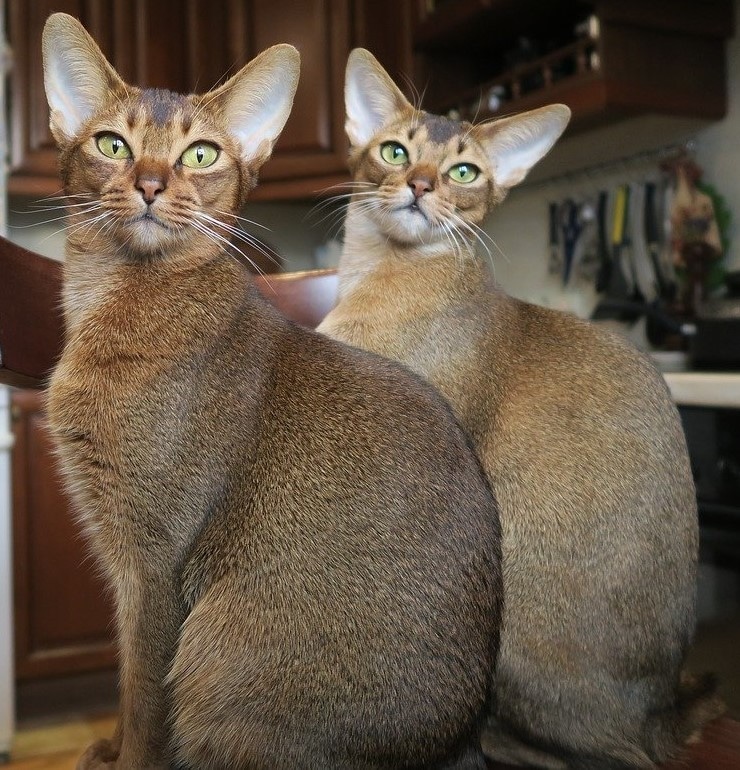
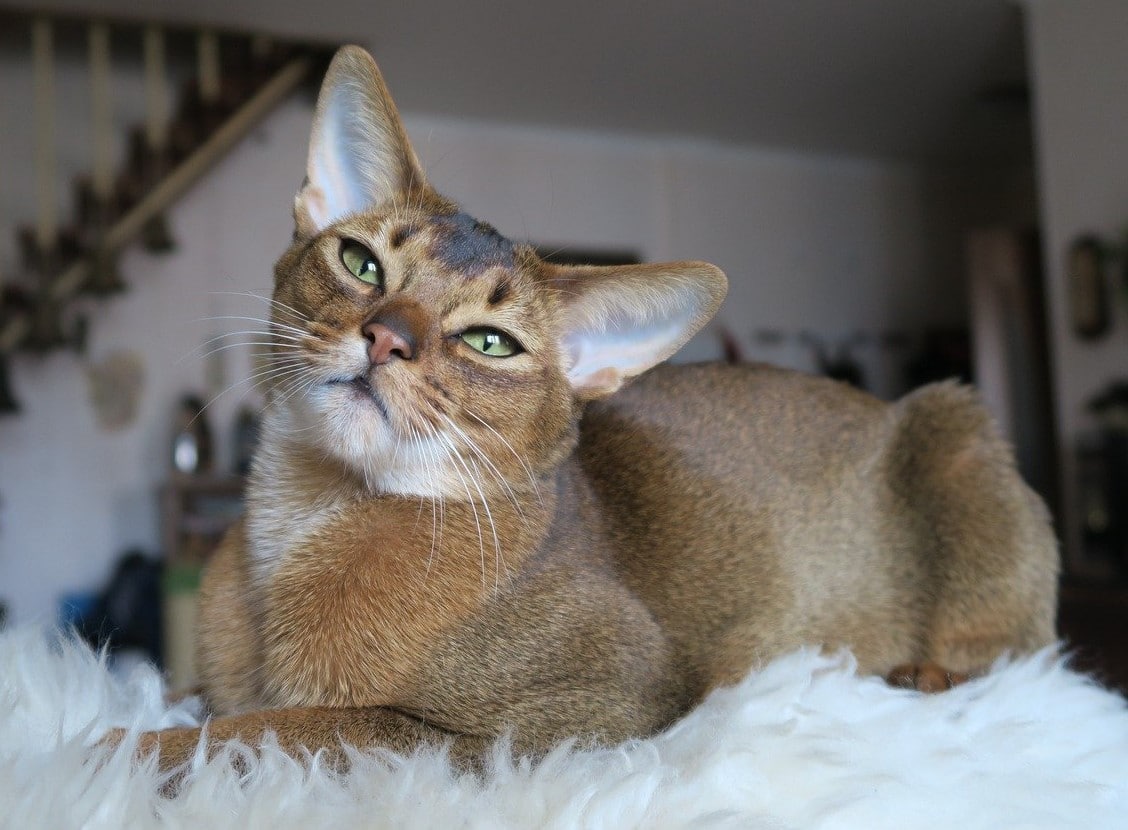
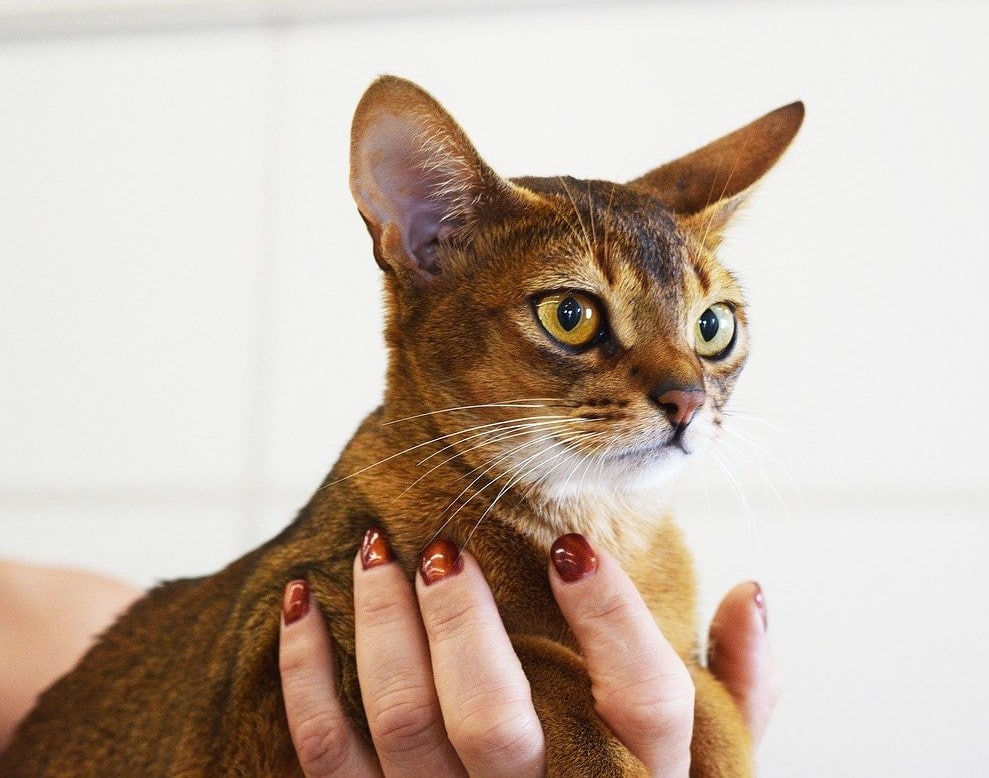
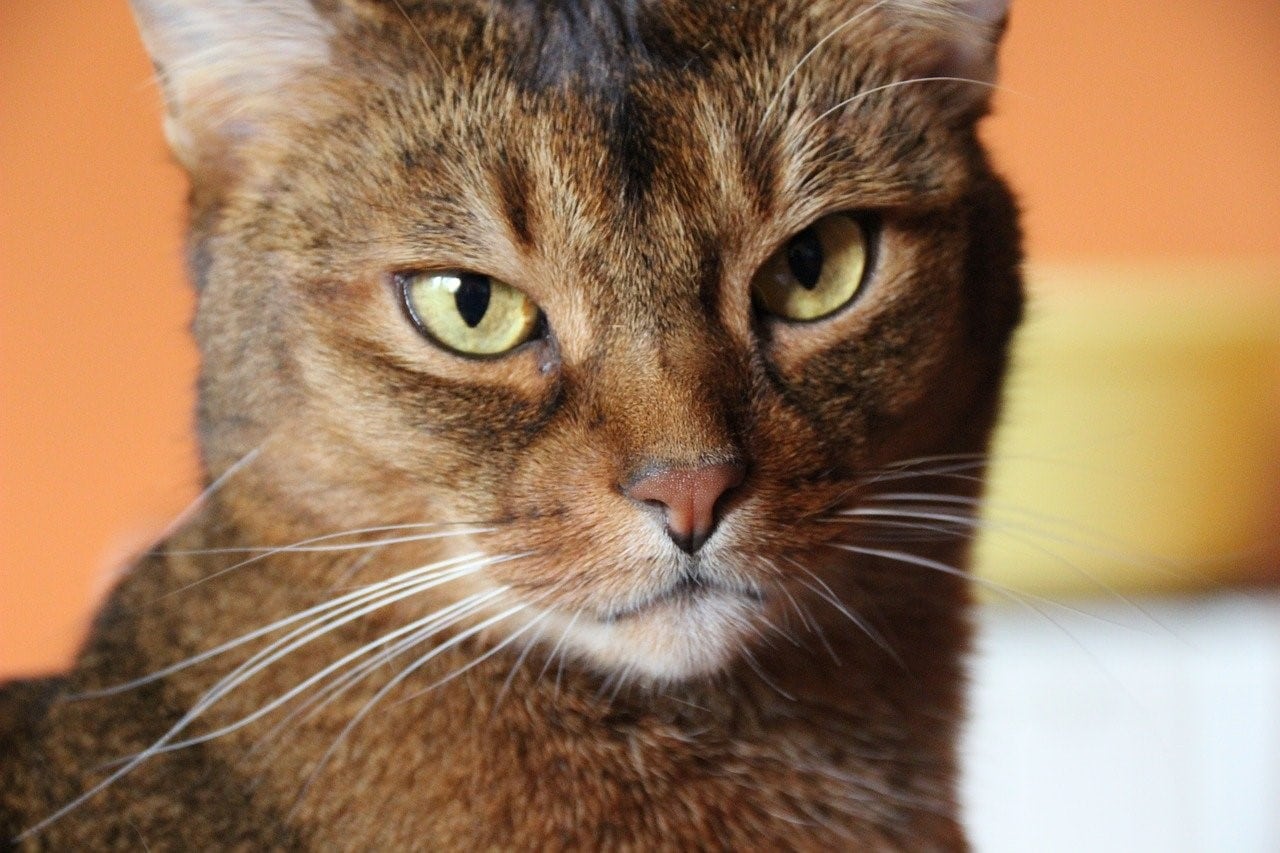
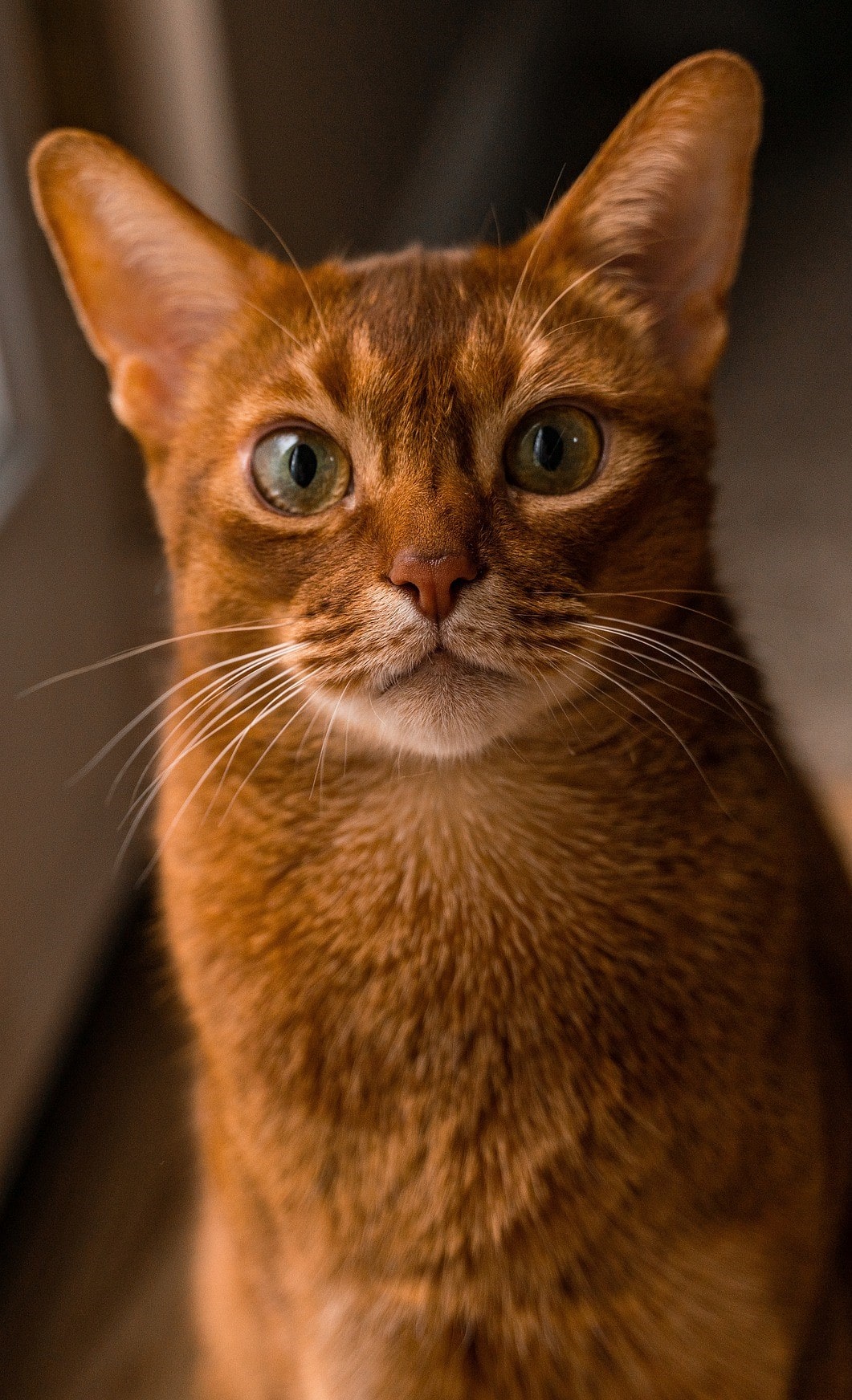
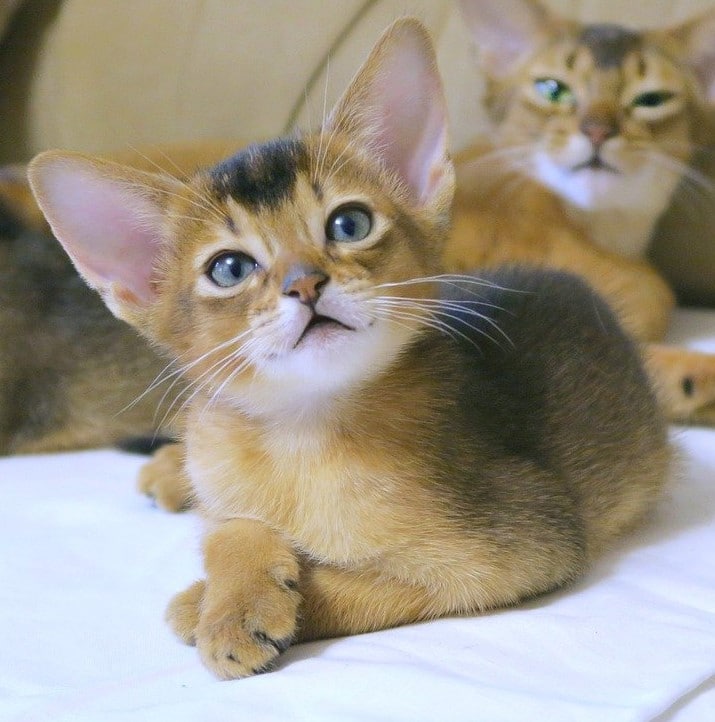
The Abyssinian cat is a friendly, loving, and affectionate cat that enjoys spending quality time with family and other pets. CFA breed standards describe the “ideal” Abyssinian cat as a breed with a “distinctly ticked” coat that gives this cat its regal appearance.
The Abyssinian is also known by other descriptive names such as Abys and bunny cats, and is said to closely resemble the cats of old, as depicted in sacred scrolls and on tomb walls in Egypt. It is thought that this is why Abyssinian cats are considered to be of Egyptian descent, and are often referred to as “one of the oldest breeds”, however their cat history begins around the same time as most popular cat breeds of today: at the Crystal Palace in 1871.
The History of the Abyssinian Cat in the USA
It is uncertain where the Abyssinian cat originated from although the breed is well-documented in Harrison Weir’s 1889 “Standard of Points”, and again in Frances Simpson’s 1903 editorial “The Book Of The Cat”. Both Weir and Simpson are credited with establishing breed standards and popularizing cat shows (as we know them today) for many pedigreed breeds, as well as for creating those breeds themselves!
Britain and India’s colonial history is well-known and documented. Trade and industry back in those days was a lively, messy affair conducted by long and arduous sea voyages or cross-country treks that carried on for months at a time. And as people discovered more and more of the planet, the greater the choice of goods or services to choose from grew.
In all parts of the world, cats (and many other animals) were traded and shared, often given as gifts, and even abandoned at any given port of call. Along the way, many people took a fancy to the look of some of these cats, adopted them, and created new breeds from the foreign or exotic cats found.
Back in the early 1830s, colonists and conquerors alike kept domestic cats on-board their ships to manage the influx of mice and rats at the docks of ports of call. Not one for being much of an indoor kind of animal, these cats are likely to have even left the ships themselves, in search of a better meal.
Continue reading: When Did Cats Arrive In Britain?
In the mid-1830s, the Leiden Zoological Museum in the Netherlands were gifted a stuffed cat that very closely resembled the statues and artifacts acquired from Egypt, leading some to speculate that the cat was Egyptian in origin, and possibly accounting for the cats’ descriptive impressions of royalty.
There is little-to-no mention of the Abyssinian cat until 1868, when a British soldier who had fought in Abyssinia (now Ethiopia, in Africa) returned home with a cat named Zula.
Zula’s first public appearance was at the second national cat show held at the Crystal Palace in December 1871, where Zula was placed third.
Get your copy of Gordon William Stables’ 1876 book “Cats: Their Points and Characteristics”, where Zula is featured.
Another book featuring the Abyssinian cat is Harrison Weir’s 1889 Our Cats And All About Them. In the same year, the Abyssinian cat was denied as a breed by Weir himself, although he had previously described the breed as a “new variety” back in 1882.
Louis Wain, a prolific artist at the time who was known for his artistic renderings of cats with big eyes, agreed with Weir that the Abyssinian cat was not a new breed, but rather, that it closely resembled many other chance-born and known recessive-gene kittens born at the time, commonly referred to as British Ticks. Wain is also known to have been fond of the breed.
Weir (1989) goes on to discuss the Abyssinian in his book, where a cross between an English wildcat and a domestic cat had resulted in ticked kittens that bore a striking resemblance to the imported Abyssinian cats at that time. Weir then goes on to declare that cats from Abyssinia are the original cats that were worshipped in Egypt many centuries before – thus perhaps becoming the originator of the Egyptian theory of the Abyssinian cat’s origins.
Between 1890 and the 1920s, Abyssinian cats were often exhibited as crosses between Persian and Abyssinian cats, resulting in Silver Abyssinian cats which the English judges did not approve of, nor encourage.
Even though British judges didn’t like them, Silver Abyssinians (also called Aluminum and Quicksilver) were bred by Mrs. Carew Cox early in the 1900s. Cox exported her cats to America, to establish the Silver Abyssinian breed in the US. The breed was not received well by the US, either.
The first recorded Abyssinian cats (according to modern breeding standards) in the US in 1907 were owned by Jane Cathcart of New Jersey. It wasn’t until 1909 that the US recognized the Abyssinian breed at the first cat show held in Boston.
CFA records include an Abyssinian cat born in 1914, and the Boston Cat Club show listings for 1920 include a classification for Abyssinian cats.
H.C. Brookes – a noted cat fancier and importer of exotic breeds – created a pamphlet for The Abyssinian Cat Club in April of 1929 and often refers to the breeds’ colorings and markings as simply Ticks, British Ticks, or Bunny Cats.’ Brookes also noted that the Abyssinian cat was a weak breed that barely survived past birth.
The Abyssinian disappeared from history in the US until the early 1930s, a few years after H.C. Brookes fell ill and died while travelling. In 1934, a pair of British Abyssinians were imported and in 1938, the American Abyssinian cat’s breed line was further strengthened by the introduction of a British Abyssinian named Ras Seyam.
Did You Know?
The history of the Abyssinian cat in Holland can be traced back to 1937
WWII almost eradicated the Abyssinian from American cat history, and in 1947 The Abyssinian Cat Club (which had disbanded and lost many supporters and members during the war) resumed. While records before the war were spotty at best, detailed records and breed standards, along with lineage and other useful facts, were well-documented post the war.
In 1957, an Ethiopian cat was born to a family from Massachusetts, who exported the cat back home with them when they returned to the US.
In 1965, a long-haired Abyssinian cat was displayed in Australia. The long-haired breed had never been fully recognized, and litters of long-haired Abyssinian kittens were often destroyed.
Recognition of the Long-Haired Abyssinian cat
In the early 1970s, the CFA classified Silver Abyssinians as “Albino Abyssinians”. Long-haired Abys began showing up in Canada in the late 1970s and were named “Somali” cats. The long-haired gene was traced back to 1952 in New York, and linked to the same bloodline as the Somali/Abyssinian cat reported in Canada.
This Canadian long-haired cat was traced back to a short-haired Abyssinian born in 1947. Genetic testing rules out crossbreeding with Persian cats to breed in the longer coats, further reinforcing the theory that the longhair gene is a recessive gene. It is however thought that the long-haired Silver Abyssinians were cross-bred as experiments with “Bunny cats” (ticked British shorthairs) and Chinchilla Persians, and that this could be the origins of the recessive gene in long-haired Abyssinians (or Somalis).
Recognized Breeding Standards For the Abyssinian Cat
It is interesting to note that the CFA breed standards classify Somalis and Abyssinians in two distinct categories, while Tica classifies both breeds as one.
The personality of the Abyssinian cat
The Abyssinian cat is a quiet, loving, playful and caring cat that enjoys family time and gets along with everyone – including kids. The Abyssinian is a smart and intelligent cat that can “fetch” – if you can keep up!
Reportedly fast, the Abyssinian cat prefers spending time socializing with other pets and ironically prefers this to spending time with its humans. An energetic ball of fur, the Abyssinian cat is very energetic, always climbing up things to reach higher places.
A quiet, soft-spoken cat, the Abyssinian nevertheless is quite a vocal cat, especially if you’re one of his favorite humans!
Physical characteristics of the Abyssinian cat
Showing muscular strength (but without the coarseness), the Aby stands at an average height of between 8 – 10 in, with a body length of between 12 – 16 in (from nose to tip-of-tail). According to standards, the Aby should weigh between 8 – 12 lb.
Abyssinian cats have an average lifespan of 9-13 years or more and are considered to be medium-sized, short-haired cats with slender, graceful bodies.
Caring for the Abyssinian cat
A regular wellness check every 6-12 months should include a comprehensive analysis of your pet’s health. Your veterinary specialist will be able to answer any questions you may have about your cat’s health and well-being, including:
- behavior and activity
- schedules
- dental health
- ear or eye problems
- fitness and exercise
- nutrition and diet
- pest control
- vaccinations
Grooming
Due to the Abys having a short coat, grooming is a relatively painless experience that needs to happen once or twice weekly. Remember that shedding season tends to lose hair faster and that many hairballs are caused by shedding coats.
TOP TIP
Use a stainless steel comb to keep your Abyssinian’s coat soft and shiny, and use a damp cloth to bring out the gloss
An Abyssinian’s coat should be left to dry naturally after a bath. Claws can be trimmed once or twice a month (as needed).
You should begin brushing your Abyssinian cat’s teeth when you switch from kitten food to adult food. Be sure to keep your Abys vaccinations, deworming, pest control, and checkups on a regular basis to ensure optimal health and longevity.
Feeding The Abyssinian Cat
Considered a domestic breed, Abyssinian cats do not require a breed-specific diet, although their needs are somewhat heavier than most due to their size and very high activity levels. This includes feeding them smaller portions more often per day to keep up with their kilojoule requirements.
Be sure to have loads of space available for your Aby cat; like most large and active pets, the Abyssinian is likely to get lazy and pick up health problems if he doesn’t get enough exercise, especially if you’re feeding more frequently or feeding on demand.
Common diseases of the Abyssinian cat
Lorem ipsum dolor sit amet, consectetur adipiscing elit. Ut elit tellus, luctus nec ullamcorper mattis, pulvinar dapibus leo.
Five quick facts about the Abyssinian cat
Add Your Heading Text Here
Lorem ipsum dolor sit amet, consectetur adipiscing elit. Ut elit tellus, luctus nec ullamcorper mattis, pulvinar dapibus leo.
Add Your Heading Text Here
Lorem ipsum dolor sit amet, consectetur adipiscing elit. Ut elit tellus, luctus nec ullamcorper mattis, pulvinar dapibus leo.
Add Your Heading Text Here
Lorem ipsum dolor sit amet, consectetur adipiscing elit. Ut elit tellus, luctus nec ullamcorper mattis, pulvinar dapibus leo.
Add Your Heading Text Here
Lorem ipsum dolor sit amet, consectetur adipiscing elit. Ut elit tellus, luctus nec ullamcorper mattis, pulvinar dapibus leo.
Add Your Heading Text Here
Lorem ipsum dolor sit amet, consectetur adipiscing elit. Ut elit tellus, luctus nec ullamcorper mattis, pulvinar dapibus leo.
Sources
- Prestige Animal Hospital. American Shorthair: More than just a Common Housecat. Retrieved November 1 2020 from https://www.prestigeanimalhospital.com/services/cats/breeds/american-shorthair
Please note that some of the links below, in this article about the British Shorthair cat, are affiliate links. This means that, at no additional cost to you, I will earn a small commission if you click through and make a purchase.
- All
- Gallery Item
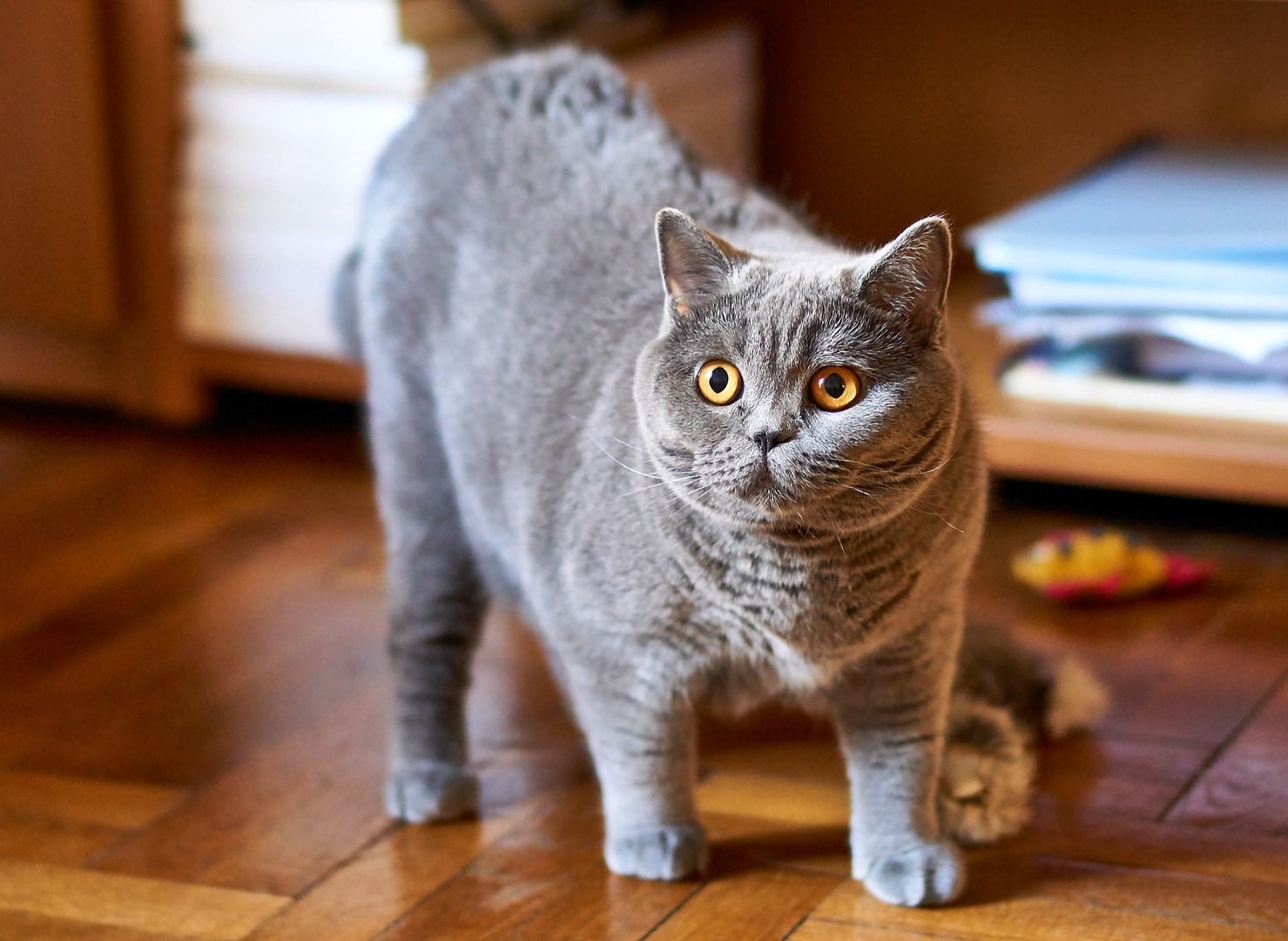
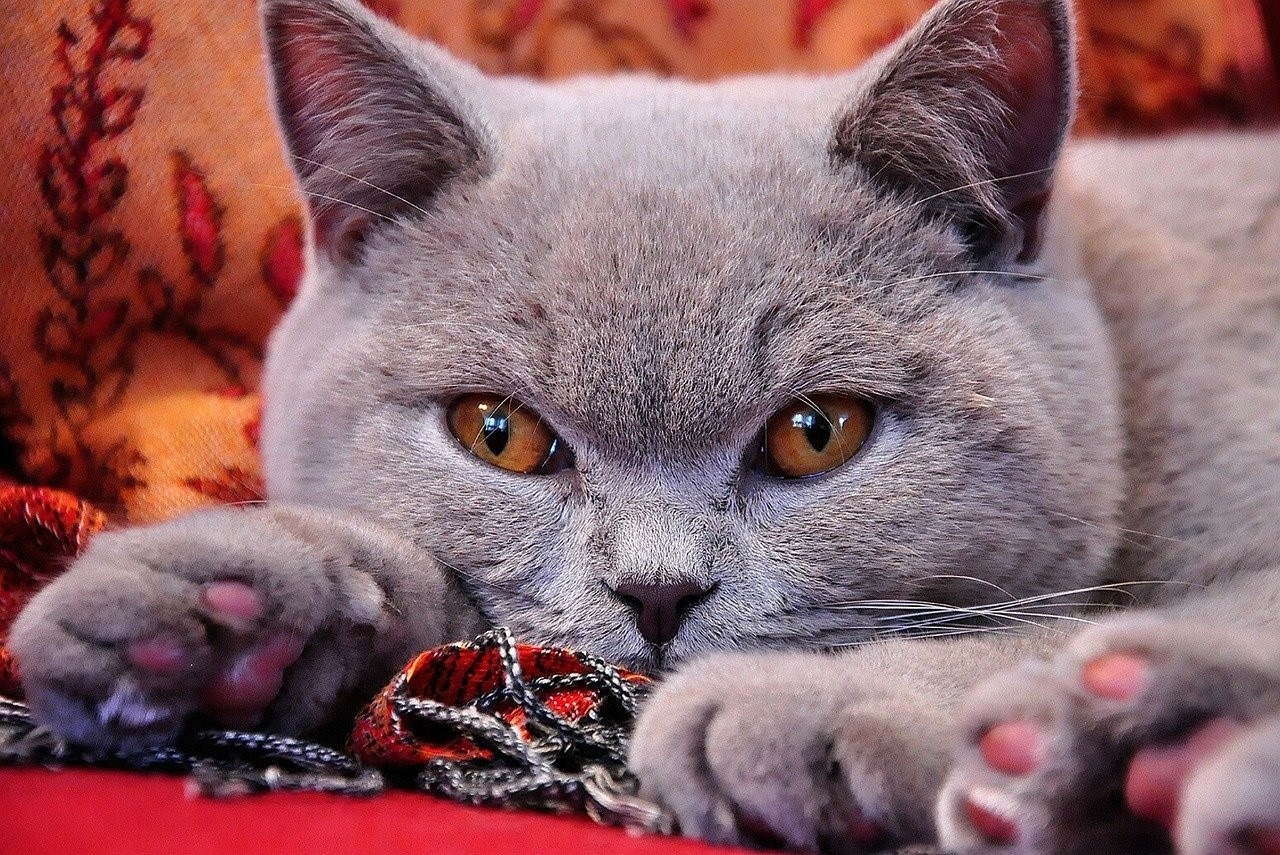
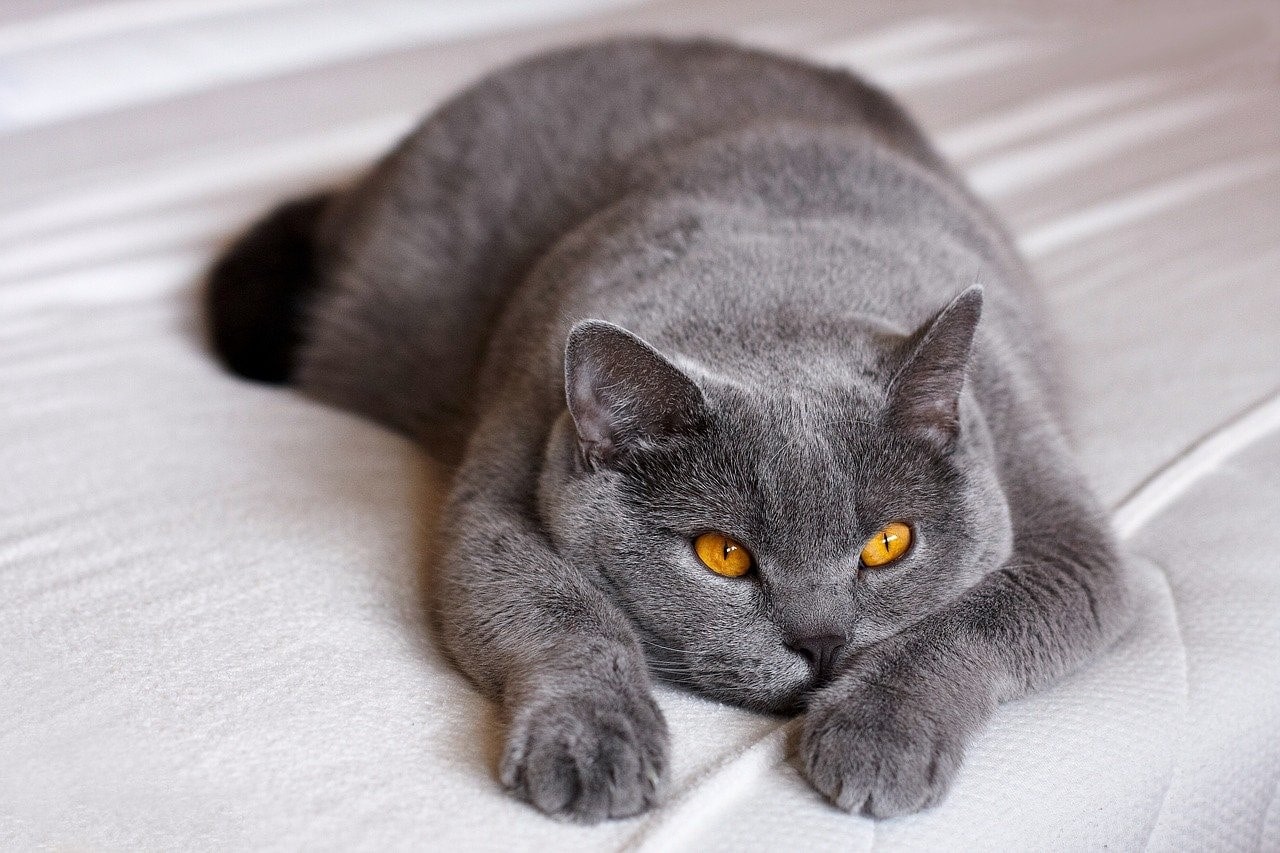
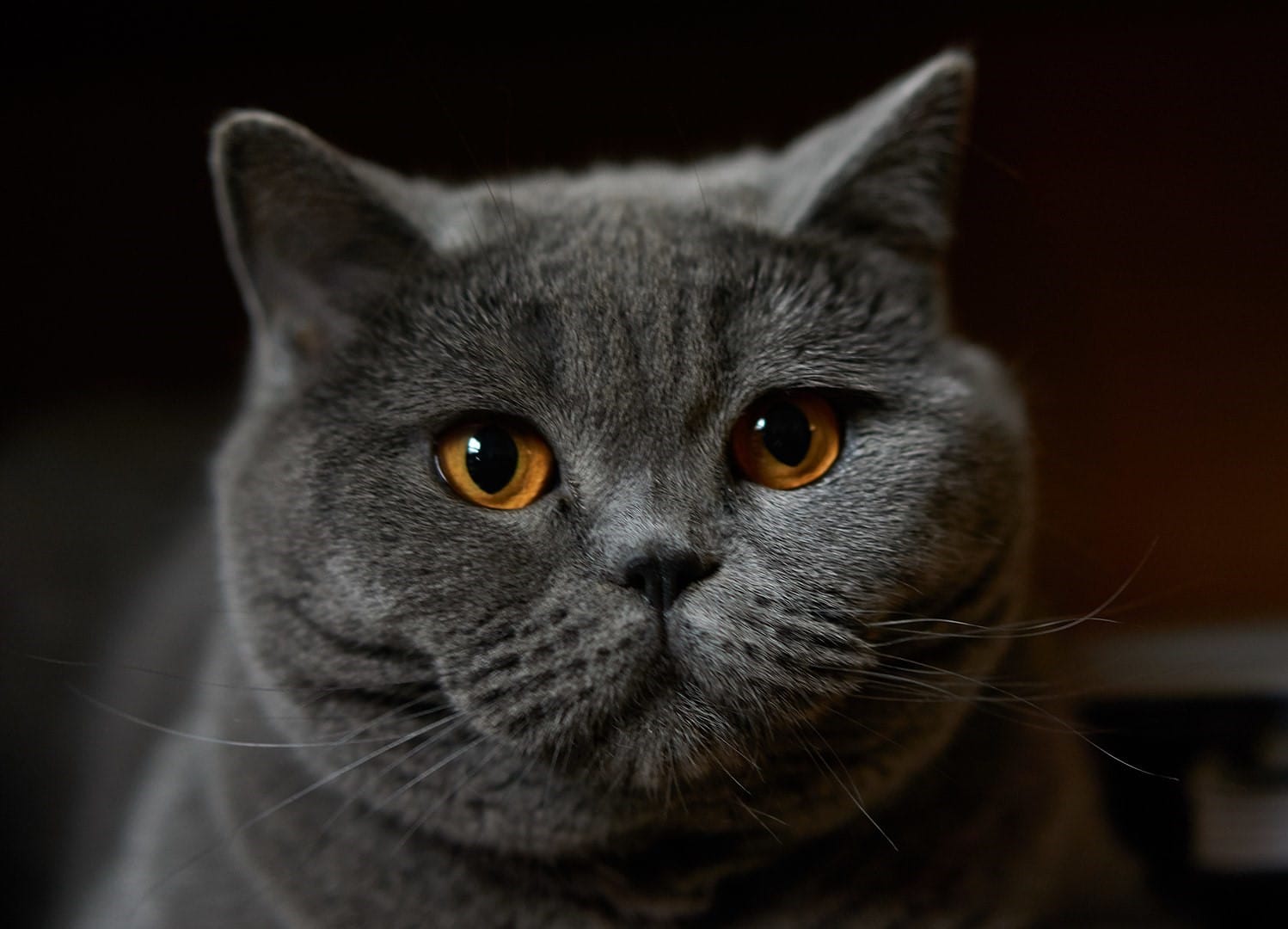
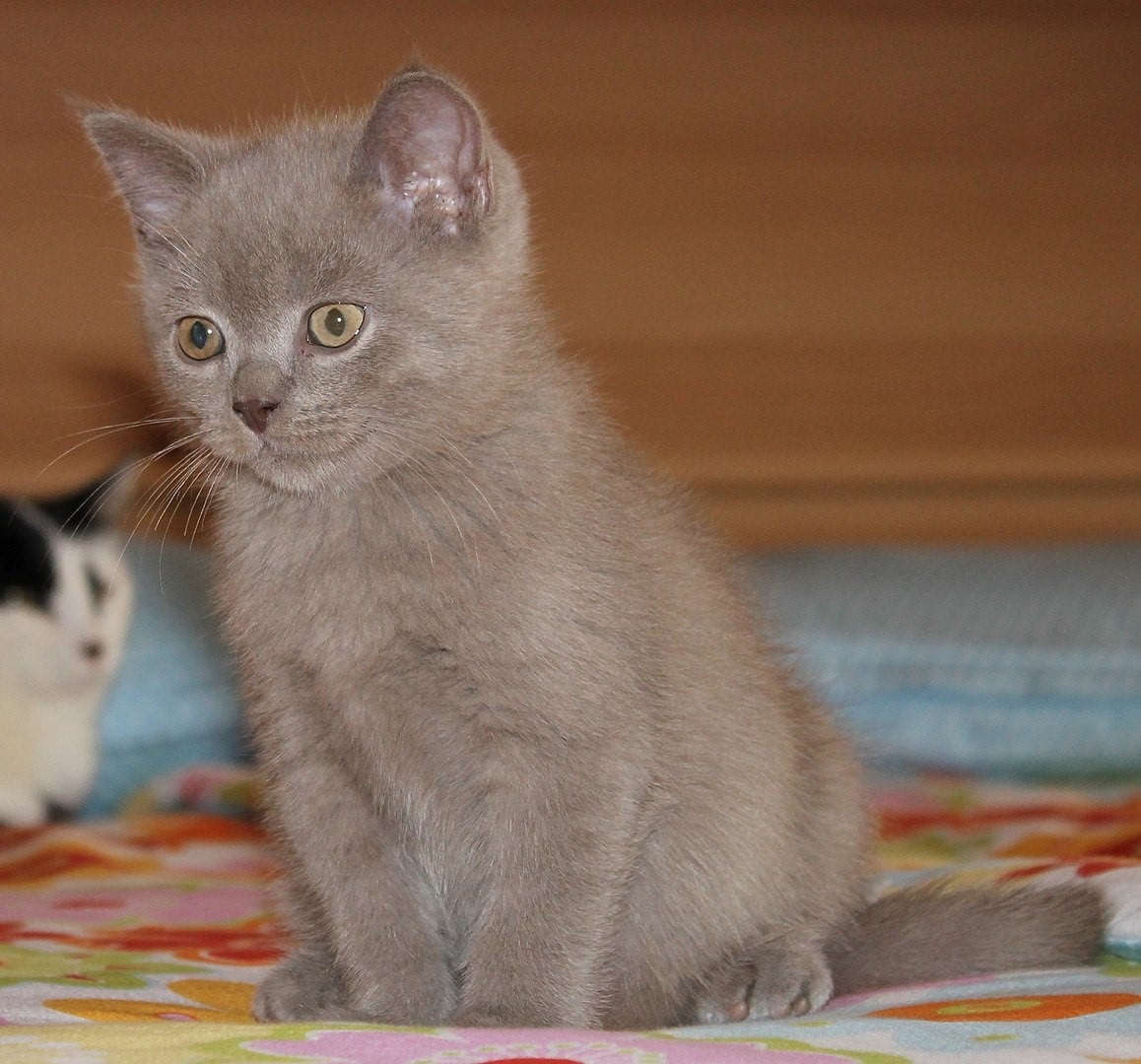
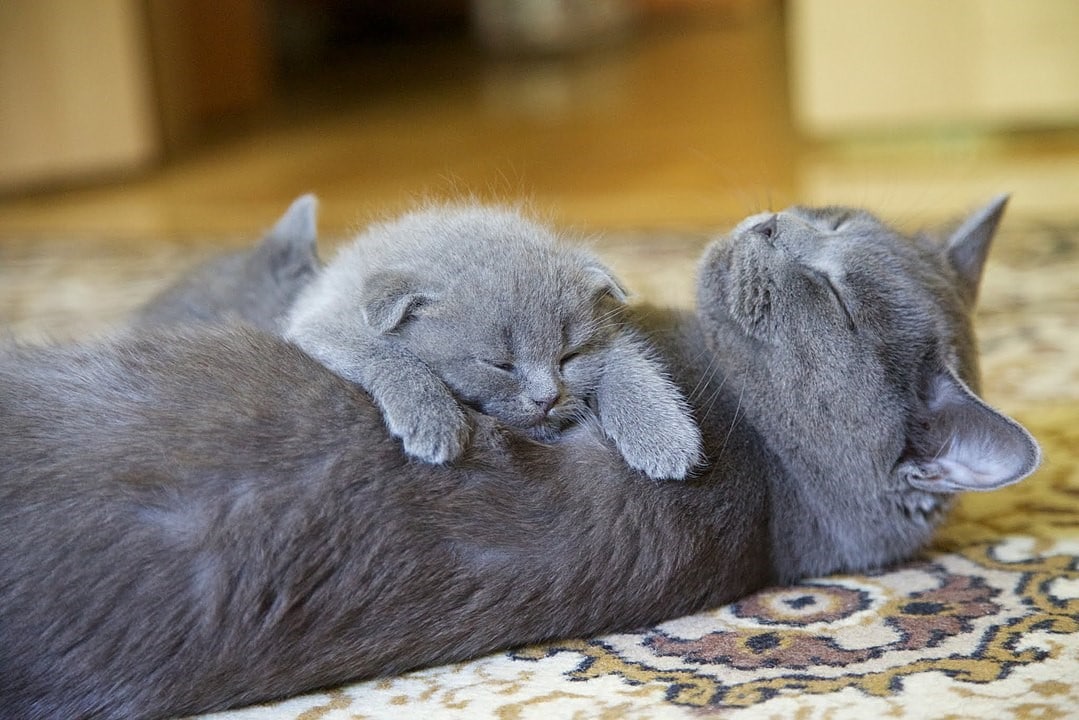
The British Shorthair cat (not to be confused with the British Longhair cat) is a loving, caring, playful cat that enjoys socializing with family and other animals. Though not as large as the Maine Coon cat, British Shorthair cats are nevertheless heavily-muscled, medium-to-large in size, prone to laziness and inactivity, and yet still a firm favorite pedigreed pet worldwide.
The History of the British Shorthair Cat in the USA
Unlike many of its cousins, the British Shorthair cat has a relatively uncomplicated history that’s easy to track. The British Shorthair cat also bears the proud distinction of being one of the world’s oldest cat breeds.
It is thought that the British Shorthair cat originated in ancient Egypt, travelling across Europe at that time on-board marauding ships that docked at ports of call. By the time the ships left port, more than one colony of cats had been established in every country visited.
Pavement specials at best at that time, the British Shorthair cats are descendents of those cats that travelled abroad with pillaging Romans, invading lands and inhabiting Great Britain in 43 AD. The British Shorthair cat was named the Roman cat until the 1800s, when a cat fancier took a liking to them and began breeding.
Harrison Weir is credited with popularizing the British Shorthair cat in 1870. The “Father-of-the-Cat-Fancy”, Weir is recognized as the first professional British Shorthair cat breeder and is further credited with establishing the first official cat show held in London’s Crystal Palace in Great Britain in 1871.
WWI saw a critical decline in breeding numbers, and by the end of the war the British Shorthair cat breed had fallen out of favor with British folk who had many more things to contend with at that time. Ardent British Shorthair cat breeders began cross-breeding with assorted domestic short-haired breeds, Russian Blues, and Persian cats. The resulting breed is what we now know as the British Shorthair cat.
Remaining much out of America’s line of sight until the 1960s, the American Cat Association of America (ACFA) recognized the British breed in 1967, and accepted it for championship in 1970, but only in one color: solid blue. Today, blue remains the most prevalent and recognized color in both Britain and abroad.
Between 1970 and the early 1980s, British breeders began experimenting with coat colors, points, and patches. The British Blue Shorthair cat is the only British breed most North Americans are aware of, and today, the British Shorthair ranks at #4 on the Cat Fanciers’ Association’s (CFA) show bench.
With official breed recognition only 40 years ago, the British Shorthair cat remains a minority breed on the CFAs breed database.
In March 2011, Project Gutenberg released a copy of Harrison Weir’s book entitled “Our Cats and All About Them: Their Varieties, Habits, and Management; and for Show, the Standard of Excellence and Beauty; Described and Pictured”. Get your free copy here.
The personality of the British Shorthair cat
The British Shorthair cat likes to keep a low profile but is a loyal cat that’s pretty easy to live with. They’re quiet, calm and collected.
British Shorthairs are also affectionate and playful (but not clingy). Chatty but soft-spoken and somewhat reserved, the British Shorthair cat will nonetheless play around and have some fun with the family and other pets if the mood strikes. Be warned though that they’re not fond of being picked up, but will stay a brief moment on your lap while accepting your grooming efforts.
Physical characteristics of the British Shorthair cat
A non-hypoallergenic cat breed with a short, dense coat that does not need to be groomed all the time, the British Shorthair cat is currently bred in colors that range from white to silver, tortoiseshell to smoky, and may even be shaded and patched in bold, solid colors (known as ‘self’ colors), tortoiseshell blends, bi- or tri-colors, colorpoint, or a variety of tabby. Tails are thick at the base and end in a rounded tip.
While cat lovers like to say that a cat’s coat color affects their personality and such, there is no existing research to substantiate this. Although melanin levels may play a role in determining this, a cat’s personality is determined more by breed specifics, socialization opportunities (play groups or other pets in the house) and their home environment.
British Shorthair cats have beautiful, teddy bear-like features and big, rounded eyes that should be orange or amber in color according to original breed show standards.
CFA breed standards for the British Shorthair are quite specific, and are based on a number of factors:
- coat color
- eye color
- leather and pad color
- evidence of hybridization (which would result in either chocolate, lavender, cinnamon, patchy white, or fawn colors).
Note:
Not all coat colors are recognized as show standards. For instance, the only time that white as a coloring is acceptable on a British Shorthair cat (in show standards) is when the cat itself is pure white, with no other color markings whatsoever. For this purpose, today’s white British Shorthair cats are developed and successfully show-bred using Persian cats only.
For a complete guide to British Shorthair breed standards, click here.
They have a medium to large body with a broad chest and short to medium legs. Known for their stocky, muscular bodies (also known as ‘cobby’ bodies), the British Shorthair has a face set wide apart but proportional in nature, with ears that are rounded in shape.
A somewhat brachycephalic cat with a shortened nose, the British Shorthair nevertheless displays none of the breathing difficulties that plague most other pedigree breeds. Kittens take a long time (in cat years) to reach adulthood, maturing between 3-4 years old in human years. As with most cat breeds, the British Shorthair starts to enter its senior years at around age 7 in human years.
Males weigh between 9-17 lb, whereas females weigh between 7-12 lb. Males stand at a height of up to 14 in., and females could reach a height of 12 in. British Shorthair cats average between 22-25 in, and have a lifespan of anywhere between 15 – 20 years – depending on diet and care.
Caring for the British Shorthair cat
As most pedigreed cats are indoor cats (due to theft and to protect them from unwarranted diseases or being damaged in fights with other animals), grooming and diet are vitally important.
Grooming
A low-maintenance cat, the British Shorthair needs weekly grooming during seasonal changes when coats may be thickening or thinning. A huge belly-rub fan, the British Shorthair enjoys a good tummy rub as part of the grooming process, but tends not to linger. Brushing is seen as a show of affection and the British Shorthair enjoys being groomed.
Brushing the British Shorthair cat’s teeth regularly will prevent periodontal disease, but daily dental hygiene is always best, especially as your cat ages.
Check your pet’s eyes regularly for infections and dirt, and wipe gently with a clean, damp towelette or a face cloth, taking care to use a clean spot for each eye.
Domestic pets should always have fresh, clean water. Outdoor cats need clean, fresh water outside, too.
If cleaning your pet’s ears, be sure not to use the in-ear buds that humans mostly prefer, and stick to soft cloth or rounded cotton balls that cannot do harm.
Feeding
Giving your British Shorthair cat the perfect (or at least close to perfect) food is really important because the nutrients in the food you give them determines their overall health and well-being. Therefore, you should be feeding her between three-five small meals per day (at around half a pouch of wet food per meal, or a handful of kibbles).
As with all kittens switching to solids, your British Shorthair kitten can eat dry kibble food although we recommend adding a little warm water to the bowl to soften the kibbles for them. As they grow older, you could spoil them with red meat.
An indoor cat that doesn’t really get much exercise, the British Shorthair’s diet should be carefully monitored to avoid overfeeding. Most people will tell you to feed a cat on demand, but we recommend a monitored diet for indoor cats, such as the high-protein indoor-cat adult diet. For kittens, we recommend a kitten-specific diet that’s easy to digest, supports their immune systems, and is packed full of essential vitamins and minerals (and taurine).
Senior cats should be placed on diets that include a smaller-sized kibble, contain a mix of dry and wet food, that will support joint and muscle health as they age.
A well-looked-after British Shorthair adult cat could live to anywhere between 15 and 20 human years. Kittens mature around 3-4 years, and most cats are already considered seniors at around 7-8 years. That means that your cat’s diet in her later years is vital to her overall health, well-being, and longevity.
Don’t skimp on the essential nutrients.
Common diseases of the British Shorthair cat
The most common diseases and conditions that affect the British Shorthair are:
- obesity and/or diabetes due to inactivity and feed-on-demand feeding routines
- arthritis, which is the swelling and tenderness of one or more joints
- hyperthyroidism, which can accelerate metabolism, causing unintentional weight loss and a rapid or irregular heartbeat
- ear mite infestations (also known as Otitis Externa)
- hypertrophic cardiomyopathy which is a disease in which the heart muscle becomes abnormally thick
The British Shorthair Cat Compared to Other Cats
British Shorthair | |||
|---|---|---|---|
Longevity | 15+ years | 13+ years | 12+ years |
Height | 22-25 in | 10-16 in | 29-31 in |
Weight | 7-17 lb | 15-25 lb | 8-15 lb |
Coat | Short and dense | long and thick | short and dense |
Eyes | green, gold, blue, odd | blue | green, yellow, gold, copper |
Distinguishing Features | medium-to-large body | shaggy-like fur | sleek, elegant bodies |
Personality | calm, cuddly, independent | sociable and very playful | intelligent, talkative, sociable |
Temperament | lovable and sociable | lovable and adaptable | energetic and playful |
Land of origin | United Kingdom | United States | Iran |
Year of origin | 43 AD | 1700 | 1350 |
Recognized By | CFA, ACFA, FIFe, TICA | CFA, ACFA, FIFe, TICA | CFA, ACFA, FIFe, TICA |
World Ranking | 2 | 3 | 6 |
Five quick facts about the British Shorthair cat
The British Shorthair cat and the British Blue cat are the same cat
At a stage, cat agencies such as The CFA only recognized the British Shorthair in the well-known “blue” (grey) color, and for a while, the British Shorthair was recognized as the British Blue. As more colors were introduced and accepted in-show, the breed description was changed to simply British Shorthair or “The British” to reflect acceptance of the various coat colors.
The British Shorthair was the first British pedigreed cat to be displayed at British cat shows
At the earliest British cat shows back in the 1800s, British Shorthairs were the only pedigreed British cats exhibited. All other cats on show at the time were simply described by coat color or type.
The British Shorthair cat may have inspired Lewis Carroll’s Cheshire Cat.
Historians think that Lewis Carroll may have based his Cheshire Cat illustrations in Alice’s Adventures in Wonderland off a tabby British Shorthair.
A British Shorthair once had the world’s loudest purr.
His vocal rumblings measured 67.7 decibels, and were reportedly as “noisy as a lawnmower”. Sadly, Smokey died from kidney failure in 2014.
A British Shorthair cat starred in Stephen King’s Pet Sematary horror movie
The original movie (shot in 1989) uses a British Shorthair to portray the dead cat, Winston Churchill, that comes back to life. In the 2019 remake of the same name, a Maine Coon cat portrays the same character. The producers felt that the Maine Coon better resembled the cover art from Stephen King’s original book cover.
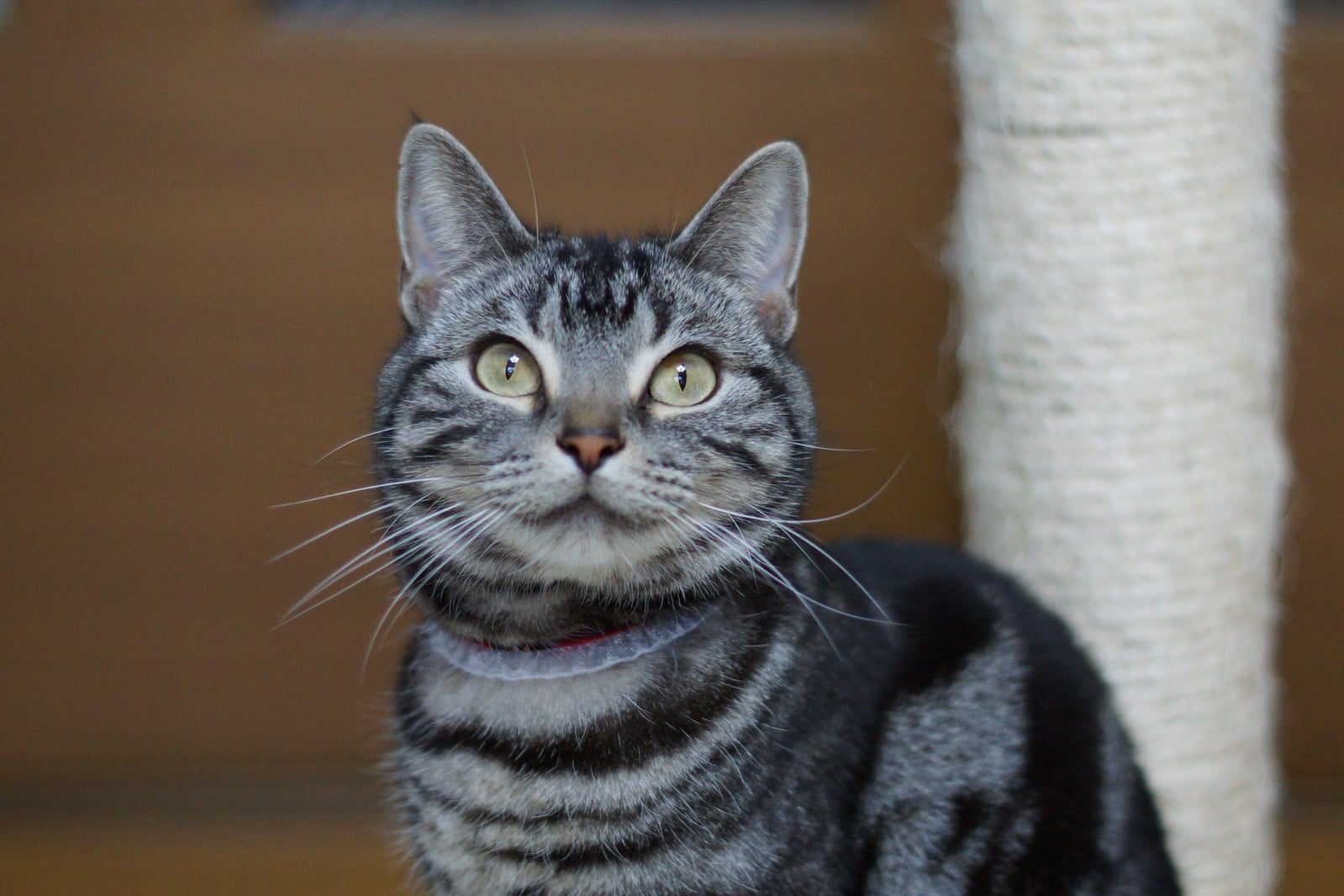
American shorthair cat
Lorem ipsum dolor sit amet, conse ctetur adipisicing elit, sed do eiusmod tempor incididunt ut…
Abyssinian
Lorem ipsum dolor sit amet, conse ctetur adipisicing elit, sed do eiusmod tempor incididunt ut…
Bengal
Lorem ipsum dolor sit amet, conse ctetur adipisicing elit, sed do eiusmod tempor incididunt ut…
Item Four
Lorem ipsum dolor sit amet, conse ctetur adipisicing elit, sed do eiusmod tempor incididunt ut…
Default Title
Lorem ipsum dolor sit amet, conse ctetur adipisicing elit, sed do eiusmod tempor incididunt ut…
Sources
- Cat Breeds 101. British Shorthair. Retrieved December 20 2020 from https://catbreeds101.com/british-shorthair/
- The Cat Fanciers Association. About the British Shorthair. Retrieved December 20 2020 from https://cfa.org/british-shorthair/
- My British Shorthair. British Shorthair Colours – Full Guide. Retrieved December 20 2020 from https://mybritishshorthair.com/british-shorthair-colours-full-guide/
- Cats Love To Know. 13 Gorgeous Grey Cat Breeds. Retrieved December 20 2020 from https://cats.lovetoknow.com/cat-breeds/13-gorgeous-grey-cat-breeds
- Hill’s. British Shorthair Information and Personality Traits. Retrieved December 20 2020 from https://www.hillspet.com/cat-care/cat-breeds/british-shorthair
- Cattime. British Shorthair. Retrieved December 20 2020 from https://cattime.com/cat-breeds/british-shorthair-cats#/slide/1
- Daily Paws. British Shorthair. Retrieved December 20 2020 from https://www.dailypaws.com/cats-kittens/cat-breeds/british-shorthair
- The Spruce Pets. British Shorthair (British Blue): Cat Breed Profile. Retrieved December 20 2020 from https://www.thesprucepets.com/learn-all-about-the-british-shorthair-cat-4705418
- Paw Culture. All About British Shorthairs. Retrieved December 20 2020 from https://www.pawculture.com/breed-basics/cat-breeds/all-about-british-shorthairs/
- Petfinder. British Shorthair. Retrieved December 20 2020 from https://www.petfinder.com/cat-breeds/british-shorthair/
- Purina. British Shorthair. Retrieved December 20 2020 from https://www.purina.co.uk/cats/cat-breeds/library/british-shorthair
- Royal Canin. British Shorthair. Retrieved December 20 2020 from https://www.royalcanin.com/za/cats/breeds/breed-library/british-shorthair
- Vetstreet. British Shorthair. Retrieved December 20 2020 from http://www.vetstreet.com/cats/british-shorthair#1_ugw20zmq
Please note that some of the links below are affiliate links. This means that, at no additional cost to you, I will earn a small commission if you click through and make a purchase.
- All
- Gallery Item
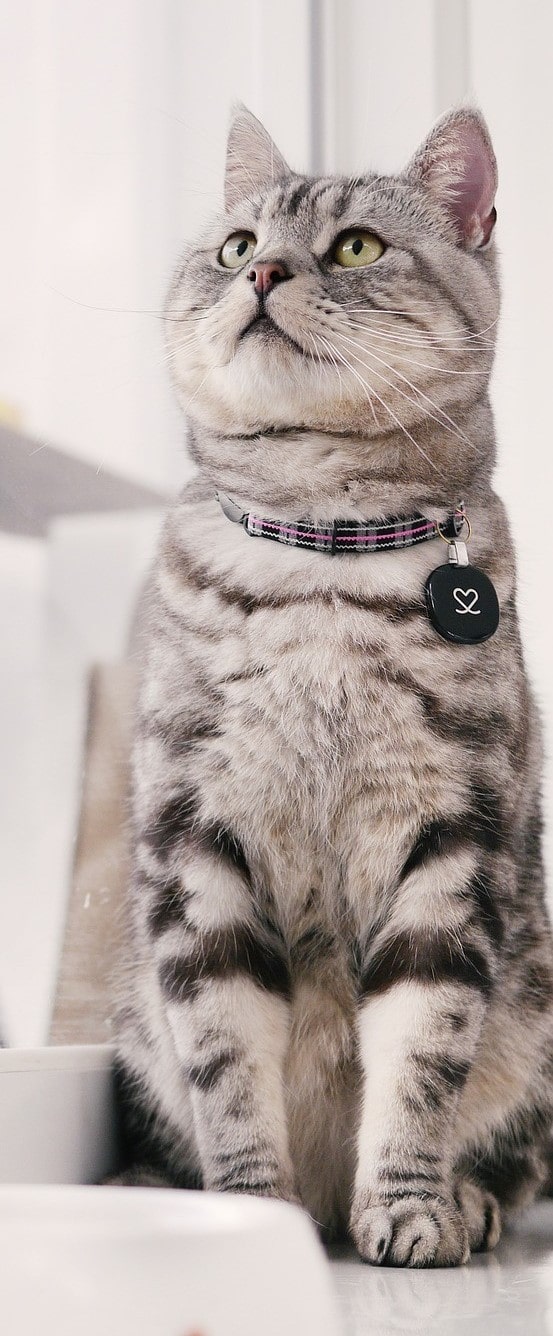
Sophisticated and distinctive in appearance, the Siamese cat is a result of a genetic mutation. These beautiful cats enjoy playing games with their owners (servants), and are known for enjoying a quick game of catch or taking a stroll on a leash.
A natural breed, the Siamese cat’s original pointed pattern contributed to the introduction of quite a few other breeds, including the Balinese, the Oriental, the Himalayan Persian, the Tonkinese, and the Havana Brown cat.
There are 2 categories of Siamese cats, and 9 sub-types within these categories:
● Traditional Siamese: Applehead, Old-style (more Thai and therefore possibly cross-eyed), and Classic Siamese.
● Modern Siamese: Wedgies, light- and dark-colored points.
The History of the Siamese Cat in the USA
Although no one is certain when Siamese cats were first bred and domesticated, it is commonly believed that they originated in tropical Thailand (which was called Siam until June 1939) some time around 1350, when they first appeared in a Thai manuscript called Tamra Maew, or “The Cat Book Poems” (circa 1350-1767). This makes the Siamese one of the oldest cat breeds in the world.
Legend has it that this beautiful Siamese cat was the “temple cat” of the Siam royal family, who valued not only their exquisite beauty but also used them as guard cats. The king of Siam gifted the English Consulate General in Bangkok the first Siamese cats in Europe during the late 1800s. The king also gifted the first Siamese cats in the United States to his friend, President Rutherford B. Hayes, in 1878.
Pho and Mia were the first Siamese cats in western cat-fancy societies. They were a breeding pair brought to England in 1884 by Owen Gould, and exhibited at a London show held in the Crystal Palace in 1885 by Gould’s sister.
An uncorroborated legend is of the “Pallas cat of central Asia” named after a German naturalist and explorer, Peter Simon Pallas. Pallas claims to have seen a Siamese cat on one of his travels through the southern provinces of the Russian empire between 1793 and 1794. Pallas’ journal records the cat belonged to the Counsellor of State.
In the late 1890s and early 1900s, Siamese cats were imported into North America from Britain, France, Japan and Siam. The Siamese remained somewhat rare until after World War II, when they quickly became #1 in terms of registrations.
All cat associations (CFA, ACFA, FIFe and TICA) recognize the Siamese breed of cat. The International Cat Association recognizes the Thai, described as the original form of the native pointed cat of Thailand.
The personality of the Siamese Cat
It is well-known that the Siamese cat is highly intelligent and can be trained, but this does not mean that you can train them to do everything you wish. The Siamese cat has an agenda of its own!
Siamese like to appear “helpful” and will follow you around to supervise your every move. Though elegant in appearance, the Siamese can just as easily curl up on your lap and sleep in your bed at night as a ragamuffin cat can.
Siamese are very affectionate cats, who require the same dedication and commitment. As Siamese cats love to play, stock up on toys that’ll help you exercise your Siamese, and strengthen your bond.
“We are Siamese if you please. We are Siamese if you don’t please,” these lines sung by two haughty Siamese cats in Disney’s Lady and the Tramp, expresses the Siamese personality perfectly.
If you’ve got a Siamese cat at home, prepare to have some lengthy opinionated conversations. The Siamese will tell you exactly what they think in a loud raspy voice, and expect you to pay attention and act on their advice.
Siamese cats don’t like being left alone for too long, so rather invest in a pair of Siamese who will keep each other company when you can’t.
Physical characteristics of the Siamese Cat
Long in every way, the Siamese body, neck, legs, and tail seem to extend, and the long tail tapers to a point. The head is a long triangle and the tall ears are set on the head as a continuation of this triangle. The nose is long and straight.
The Siamese breed is medium-sized but nicely muscled. Males weigh between 6-11 lb and the females weigh a little less, between 4-6 pounds.
The distinctive Siamese eyes are almond shaped and bright blue.
The contrast between the color extremities on the body is known as color restriction (or commonly, pointing). Pointing is the difference in color of the fur on the ears, tail and feet which is darker than the overall cream color of the Siamese coat.
Blending gradually and subtly, the Siamese face also shows a mask of the same deeper point color that typically covers the face, surrounds the eyes, and covers the whisker pads. This mask is much smaller in a kitten and gradually increases as they grow.
Siamese cats are bred in hues of chocolate, seal, lilac, blue, red, cream, fawn and cinnamon colors. The Cinnamon-, Fawn-, and Caramel-Point Siamese are relative newcomers to the Siamese breed standard.
Red-Point Siamese are considered flame-point cats and are very rare, with their existence mostly questioned. Prices for these rare Siamese cats can be as high as $2000.
● The Governing Council of the Cat Fancy in the UK now includes all three colors in the Siamese breed standards
● The USA lists the Cinnamon- and Fawn-Points under Colorpoint Shorthair and Caramel Points under Colorpoint Oriental.
● The Cinnamon point only achieved championship status in 2009.
Longevity is between 8 and 15 years
Caring for the Siamese Cat
Grooming
While Siamese coats need little care, they tend to associate brushing with affection and will enjoy spending time being groomed because of this. The short, fine coat is easily cared for with weekly combing to remove dead hair and distribute skin oils.
Brush the teeth to prevent periodontal disease. Daily dental hygiene is best, but weekly brushing is better than nothing.
Feeding
Siamese show a pot belly after indulging in one day of overeating. Quick to put on weight, the Siamese needs a nutrition-controlled diet. Siamese cats are known for their finicky choices in meals, and will allow themselves to become malnourished if not pleased with the flavours of the food you provide.
Even though pedigree cats are usually kept as indoor cats, breed-specific needs of the Siamese go beyond the needs of other cats. breed-specific diets also take the size and shape of the cat into account, making breed-specific food an ideal choice for pedigreed animals.
Not sure what to buy? Shop Siamese Adult Dry Cat Food now.
A slender and muscular cat, the Siamese requires increased levels of highly-digestible proteins, moderate fat levels (at least 14%), and prebiotics to promote intestinal gut balance and maintain digestive health.
To maintain skin and coat health, the Siamese needs a diet that’s rich in amino acids, essential minerals and vitamins, and fatty acids such as omega-6 and omega-3. Finicky by choice, cats require more than your average amino acids and vitamins, according to the National Research Council Committee on Animal Nutrition (NRC).
Cats were never designed to eat a diet that consists of only wet (processed) cat food, and need to eat kibbles to keep their teeth, coats, and digestive tract healthy. The right diet can even prevent hairballs by keeping your cat’s coat healthy.
Check out this handy feeding guide for adult Siamese cats.
For kittens, we recommend a wet-food pouch as you slowly introduce them to solids and kibbles.
Senior cats need a limited-ingredient diet. This doesn’t mean you cut out the goodness; it simply means you limit the health risks associated with an abundance of certain ingredients, such as wheat or soy.
As cats age, their senses begin to dull. a flavorful diet that’s tasty and smells great will keep their appetite up. If your cat has less teeth now that she’s older, consider adding a little warm water to soften her kibbles, or switch to a wet-food diet.
For more advice on feeding senior cats (of all breed types) click here.
Common diseases of the Siamese Cat
Problems that may affect the Siamese include:
● Systemic Amyloidosis, a disease that prevents organs from functioning correctly and is due to a protein buildup in multiple organs – but primarily the liver in Siamese cats
● Asthma/bronchial disease
● Congenital heart defects such as aortic stenosis
● Mediastinal Lymphoma is a cancer that causes a build-up of fluid in and around the lungs making it very difficult to breath
Click here for a fascinating 1979 long-term view of Siamese breeding profiles.
Four quick facts about the Siamese Cat
Is it true that Siamese cats can change their coat colors?
Yes, Siamese coats are white when the temperature is cool, and will deepen as the temperature warms up, often to a deep, rich cream color and their distinctive points will darken, too
What color are Siamese cats at birth?
Born white, Siamese cats develop their different colors after a few weeks.
How old is the oldest Siamese cat?
According to The Guinness World Records, the eldest cat was a male aged 30 when he died. Born in 1986, the eldest Siamese cat (Scooter) passed in 2016.
Are Siamese cats possessive and clingy?
Siamese cats tend to be jealous and would not be happy if you brought home a strange animal. That said, this is one of the most lovable, affectionate breeds on the planet – they just don’t like sharing you!
Sources
- Prestige Animal Hospital. American Shorthair: More than just a Common Housecat. Retrieved November 1 2020 from https://www.prestigeanimalhospital.com/services/cats/breeds/american-shorthair
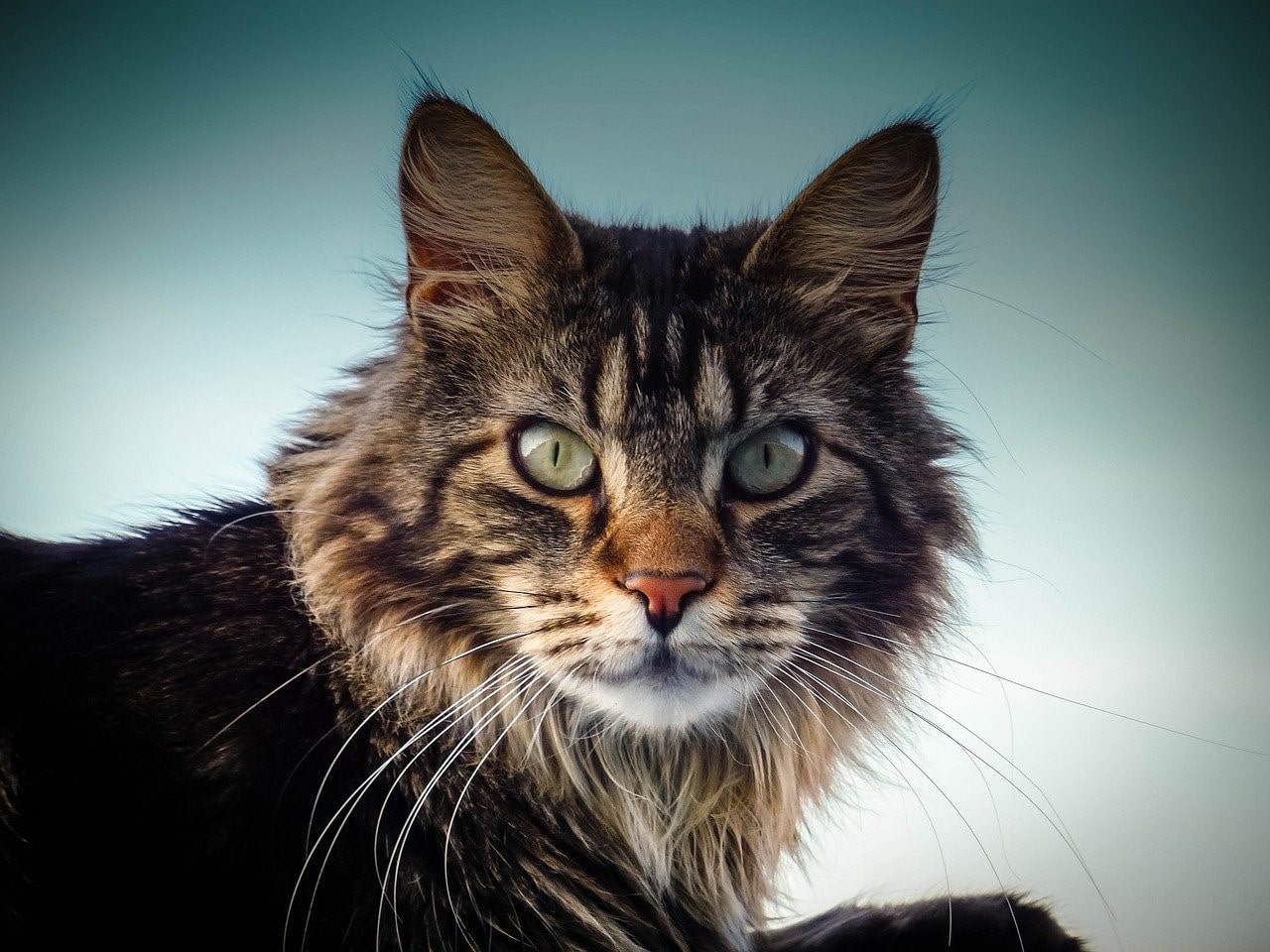
Please note that some of the links below are affiliate links. This means that, at no additional cost to you, I will earn a small commission if you click through and make a purchase.
- All
- Gallery Item
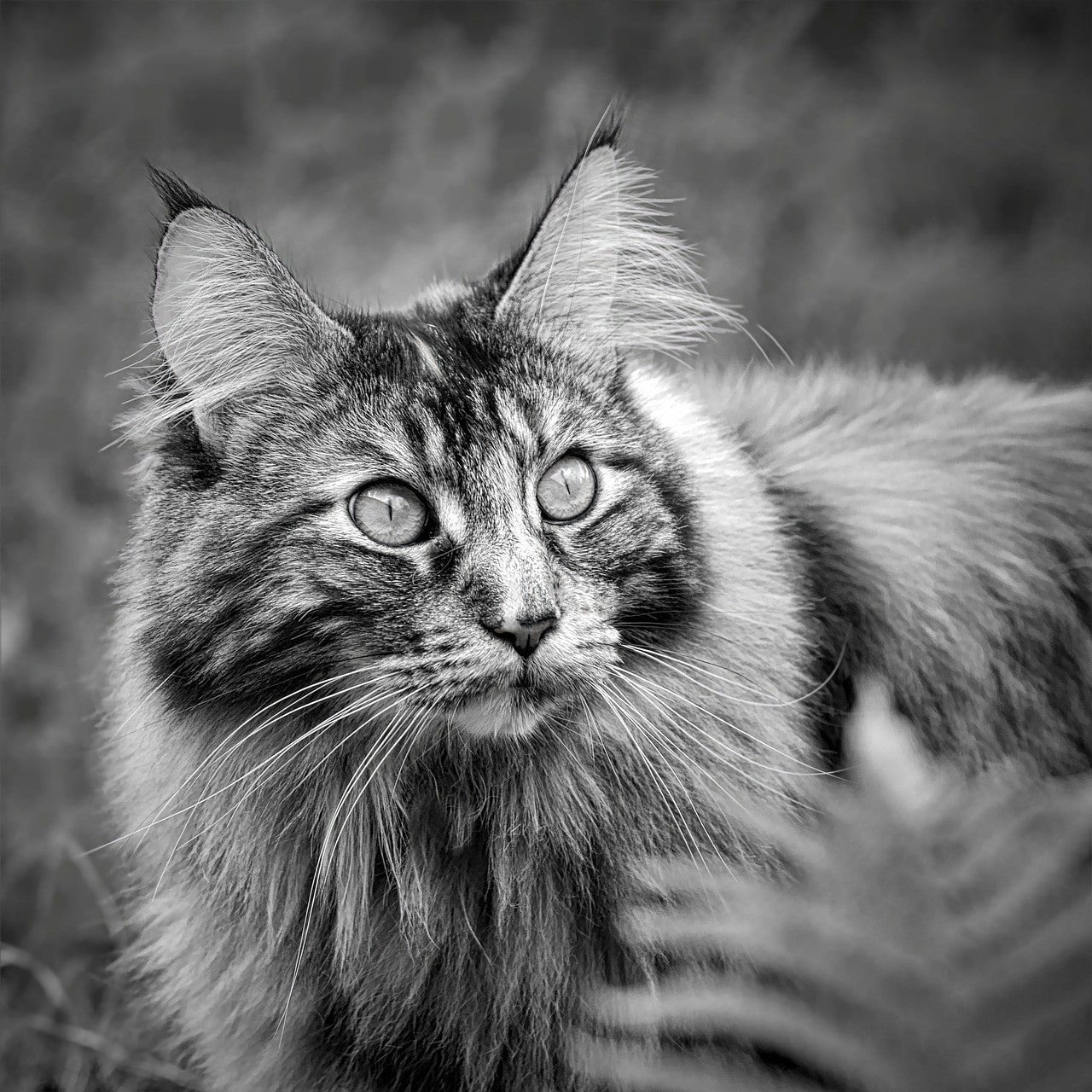
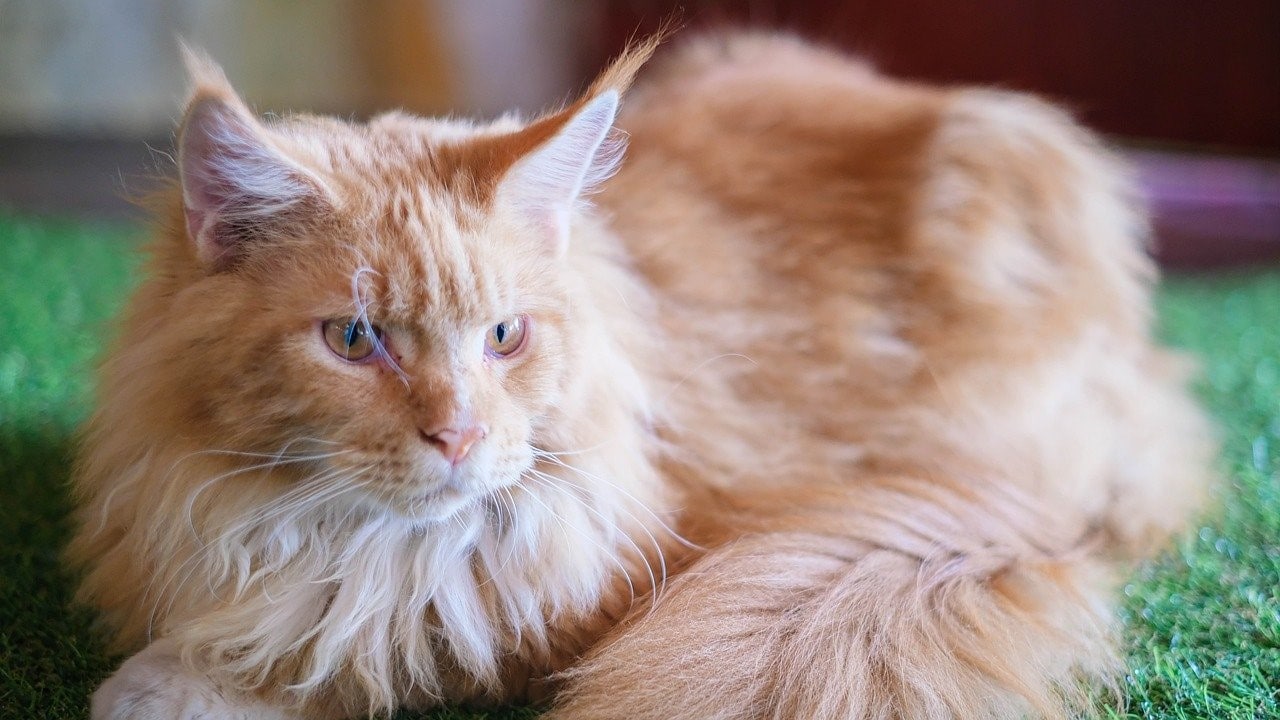
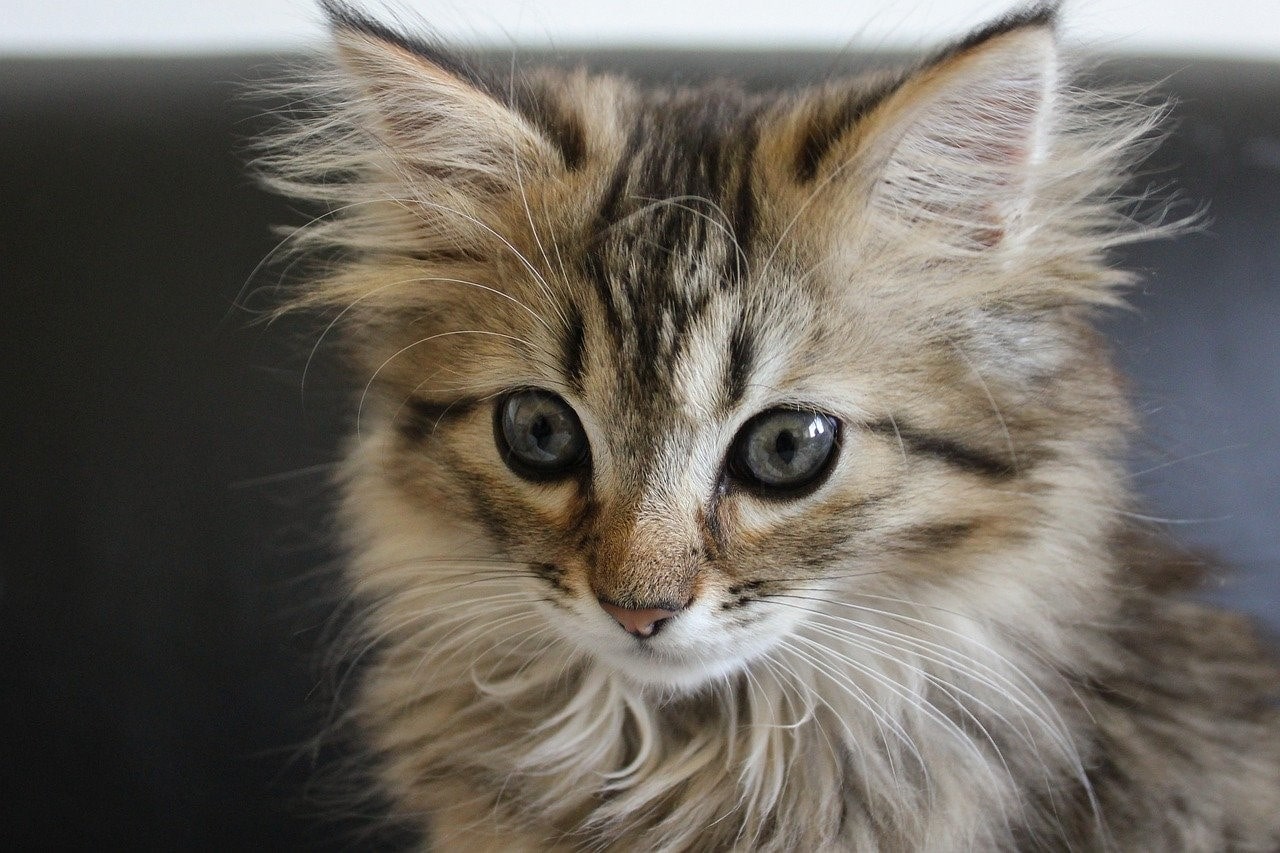
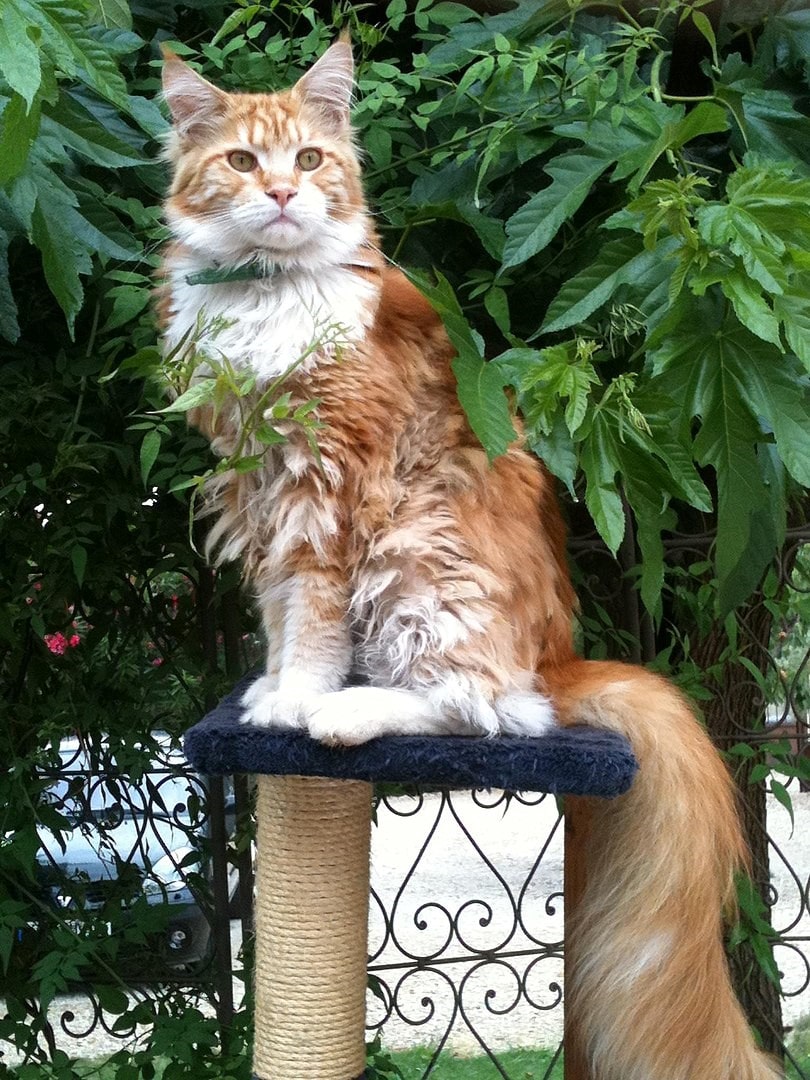
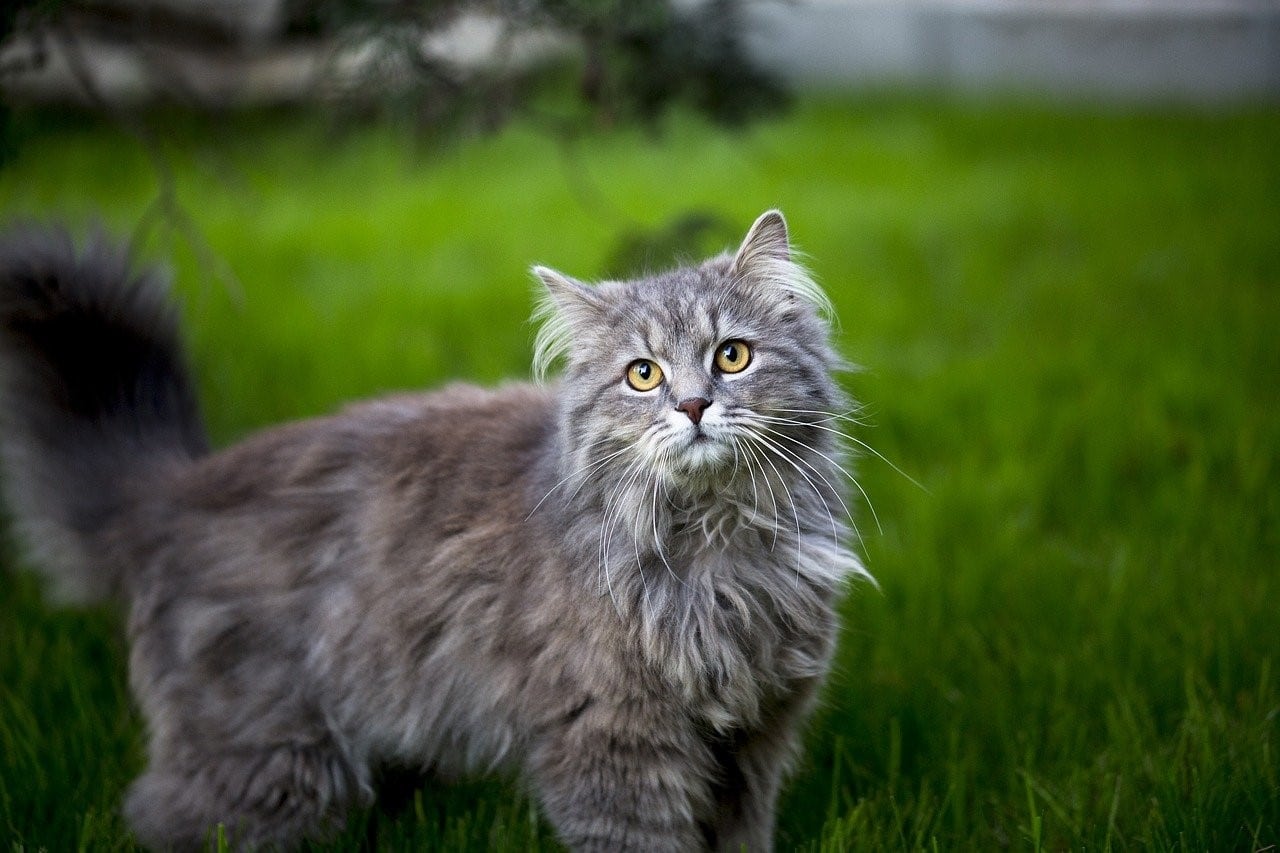

The most north-eastern state of the Northeastern United States is where you’ll find the one of the largest breeds of domesticated cats in the US. Ironically, you’ll find this rather large cat in the 12th smallest state by area, which is also the 9th least populous state, and the 13th least densely populated state – Maine – where the Maine Coon cat (also known as the Mancoon cat) is the official state cat)
The History of the Maine Coon cat in the USA
Shrouded in mystery, the legends tell of six Angora pet cats that Queen Marie Antoinette shipped to Wiscasset, Maine, while planning her options and escape route from France during the French Revolution. It is said that Maine Coons are descendants of these six Angoras, the theory being that the Angoras on board Sally most likely mated with native cats, ultimately creating a breed of their own.
Another implausible theory says that Coons are the result of pairings between semi-wild or feral domesticated cats mating with raccoons. Whilst this pairing is genetically impossible, the breed does retain its name from this legend. Genetic testing on Maine Coon’s has however revealed that they’re actually descendants of a mysterious, and now extinct, domestic cat breed.
The third theory holds that these cats originated from pairings between short-haired domestic cats and longhaired cats back in the 1700s. These long- and short-hair cats are thought to have been brought to America by Vikings or European sailors.
An unrespected theory amongst some breeders is that Maine Coon cats are descended from spirit cats that stalked the North-Eastern US in ancient times gone by.
Another theory holds that foreign cats landed on Maine’s shores in settler ships and bred with the local American bobcat, also known as the red lynx and native from North America to southern Canada. The red lynx is a medium-sized breed.
Thanks to modern genetic testing, results indicate that these cats are actually descended from the Norwegian Forest Cat – and the mysteriously extinct domestic breed. As both these cats and the Vikings are extinct, the Vikings are likely responsible for introducing the Maine Coon cat to America.
In the late 1860s, Maine farmers boasted of their cats, and the “Maine State Champion Coon Cat” contest was born. In 1878, 12 Maine Coon cats were entered into a cat show in Boston.
In 1895, the first North American cat show (hosted at Madison Square Gardens, NY) saw a female Maine Coon brown tabby cat named Cosey win the silver collar and was named Best in Show. This collar – an important piece of the Maine Coon’s history – can be found at the CFA Central Office in the Jean Baker Rose Memorial Library.
The first real mention of Maine Coon cats in a literary sense was in 1903, when The Book of the Cat was published by Frances Simpson. In the book, an entire chapter is dedicated to Captain Jenks white and black Maine Coon cat co-owned by co-author Mrs E.R. Pierce).
An avid breeder and lover of Maine Coons, Pierce owned several Mancoons at the time. In the book, Pierce declares that “large [Maine Coon cat] shows were held in all the populous eastern cities, with some held as far west as Chicago in the 1870s.”
In the early 1900s, the Maine Coon cat’s popularity began to decline as smaller long-haired breeds (such as the Persian, American Shorthair, and Exotic Shorthair cats) became more popular as a breed in the Western world, thanks to travellers and avid collectors or breeders.
In 1911, a cat show in Portland, Oregon would see the last recorded win by a Maine Coon in a national cat show for over 40 years! A “longhaired blue Maine Cat” took first place in his class and best of show but it wasn’t enough to stop the breed from fading to obscurity, occasionally being shown under the “Any Other Variety” (AOV) category at random shows.
Very little is heard about the breed until the early 1950s, when the Central Maine Cat Club (CMCC) was created to regulate breeding lines, keep accurate breeding records, showcase the breed, sponsor shows, create written standards for the breed, and to generate awareness of the breed.
20 years after the CMCC was first created, the Maine Coon Cat Club (MCCC) was formed in 1973. The following year, the Maine Coon cat met all requirements for recognition as a provisional breed, including breed standards, a registered breed club, and over 130 registered cats.
Accepted for provisional status by the CFA in 1975, this native American longhaired cat was confirmed for Championship status in 1976.
Steadily rising in popularity, the Maine Coon cat has become the second most-popular breed in the CFA registry todays
The personality of the Maine Coon cat
Maine Coon cat owners everywhere say that their beloved gentle giants are not only big and magnificent, they are also sweet-tempered and highly adaptable to any environment. Extremely sociable and very playful, Maine Coon cats are quite interactive with their human slaves, other family members, other pets in the house, and the occasional visitor or three trusted to be allowed in.
Their luscious coats are water-resistant, which is great because Maine Coons love playing in and with water, but dislike getting caught in the rain or being bathed.
Physical characteristics of the Maine Coon cat
The “dogs of the cat world” due to their size and loyal, loving personality, Maine Coons are heavily boned and muscular. The Maine Coon’s profile shows a slight dip under their large eyes, with a broad chest and thick legs. Their bodies are long and rectangular in shape, and they have long, bushy tails.
Not of average cat sizes by any means, the Maine Coon’s size is based on gender, where males weigh between 15-25lb, and females weigh slightly less. Not as big-boned as they appear to be at first glance, their long, straight, silky coats and tails may have a tendency to knock things over without them actually meaning to do so.
Bred for the New England harsh winters, the Maine Coon cat’s coat gets thicker around the neck and stomach areas, helping to protect them from the snow and keep them warm. Looking much like a Mogwai from the famous Gremlins movie of the late 20th century, Maine Coons have distinguishable tufts of fur in their ears.
Maine Coons have huge paws which grow huge tufts of hair in winter, giving the impression that they have their own “snowshoes.” Although there is no specific colour or pattern in their coats, Maine Coons have a high tendency to shed.
Maine Coon cats are not hypoallergenic, but as most people are actually allergic to a protein present in the cat’s dander, saliva and urine (known as Fel d 1) and not to the cat’s fur itself, regularly grooming will significantly reduce your chances of coming into contact with Fel d 1 on your Maine Coon’s fur.
Originally outdoor cats, Maine Coons became a working breed, and were kept in barns and houses to keep rodents at bay. Although Maine Coon cats no longer need to hunt, their natural curiosity and flair for catching “prey” remains and it’s important that owners play with toys or play catch with their Maine Coons.
Maine Coons are known to be very talkative and has an opinion about many things, which it voices by chirping. Longevity ranges between 9 and 13 years.
Maine Coons are commonly prevalent and are recognised at CFA, ACFA, FIFe and TICA – Cat Associations.
Caring for the Maine Coon cat
Grooming
Train your Maine Coon from a young age that grooming is fun. Their luscious coat needs daily attention and should be brushed to make certain that the fur does not get tangled.
Use soft-bristle cat brushes, and a fine-tooth (or flea) comb to work through any matted patches – such as behind the ears – in your Maine Coon cat’s coat.
Cats are prone to tooth decay and dental infections. Regularly brushing teeth, two to three times a week, will help to prevent cavities and bigger problems.
Clipping your Maine Coon cat’s claws is a personal choice you must make if you’d like to save your furniture.
If your Maine Coon doesn’t mind a bath too much, remember to check the label to make sure it’s non-toxic for cats (who self-groom and could ingest harmful chemicals).
Feeding
The Maine Coon’s diet and nutritional intake should be monitored as the Maine Coon tends to become overweight if not controlled. The Maine Coon needs to be exercised regularly with space to run and jump. Consider spoiling your Maine Coon with a cat tree and some cat perches.
When choosing the best food for your Maine Coon cat, your budget and your cat’s preferences will be balanced by your vet’s dietary recommendations. Protein remains the most important ingredient and should form the largest percentage of your Maine Coon cat’s diet. Remember that senior cats have different needs, as do kittens.
The Maine Coon cat has a large, almost square-shaped jaw which would need a larger and rougher-shaped kibble than average. Also remember that milk is not good for cats, no matter how much they seem to like it. Milk can potentially ferment in a cat’s stomach, which would cause all sorts of health-related issues (and litter-box cleanups) that you’d rather not want to deal with.
Always have fresh, clean water on demand.
We recommend this comprehensive guide on what and when to feed your Maine Coon cat – and other breeds, too – through all life stages.
Common diseases of the Maine Coon cat
Maine Coon cats are at risk for the following diseases and medical conditions:
- Hypertrophic cardiomyopathy (HCM) – where the heart muscle is thickened. The most common cause is an overactive thyroid gland.
- Hip dysplasia – commonly seen in dogs, hip dysplasia also occurs in large or heavy cats, like the Maine Coons.
- Spinal muscular atrophy (SMA) – a disease that results in the degeneration of spinal cord neurons (which are directly responsible for conscious muscle movement).
- Bacterial and viral infections such as panleukopenia, rhinotracheitis, calicivirus, and rabies are preventable through vaccination.
Five quick facts about the Maine Coon cat
- The Guinness World Record for the longest cat was awarded to Stewie, a Maine Coon measuring 48.5 inches and more recently to Ludo who measured around 46 inches.2. The show career for the Maine Coon cat began in New York in 1895 when the best cat award was given to a tabby Maine Coon named Leo, who reigned on the Boston cat shows only until 1900 – when he was defeated by his own son.
- Mrs Norris, a large tabby Maine Coon starred in the Harry Potter movies. Actually, the cat in the movies is played by at least five similar-looking Maine Coons, each used where their particular abilities are best suited.
- A Maine Coon cat owned by a Dallas-based cat-lover was cloned commercially. Little Nicky (born October 17, 2004) was the first commercially-produced cat clone. He was produced from the DNA of a 17-year-old Maine Coon cat named Nicky.
- The oldest known Maine Coon cat to have lived is Rubble, who hailed from the UK. Born in May 1988 according to records, Rubble reached the ripe old age of 32 before he passed away.
Sources
- The Cat Fancier’s Association. America’s First Show Cat – The Main Coon Cat. Retrieved December 1 2020 from https://cfa.org/maine-coon-cat/maine-coon-cat-article/
- The Cat Fancier’s Association. About The Main Coon Cat. Retrieved December 1 2020 from https://cfa.org/maine-coon-cat/
- Cat’s Center Stage. Breed Profile: Getting to know the Maine Coon. Retrieved December 1 2020 from http://www.catscenterstage.com/breeds/maine-coon2.shtml
- Europetnet. Maine Coon. Retrieved December 1 2020 from https://www.europetnet.org/pet-resources/cat-breeds/item/1937-maine-coon.html
- Mentalfloss. 12 Huge Facts About Maine Coons. Retrieved December 1 2020 from https://www.mentalfloss.com/article/76734/12-huge-facts-about-maine-coons
- Maine Coon Expert. Maine Coon Cat – A Buyers and Owners Guide With Breed Information, Buying Advice and Facts. Retrieved December 1 2020 from https://mainecoonexpert.com/maine-coon-cat-a-buyers-and-owners-guide-with-breed-information-buying-advice-and-facts/
- Wikipedia. Maine Coon. Retrieved December 1 2020 from https://en.wikipedia.org/wiki/Maine_Coon


The Yorkshire Terrier requires intensive daily grooming with brush and comb. If you do not have time or the inclination to do this, rather have the coat trimmed by a salon. The hair is normally kept out of the eyes with a rubber band or a ribbon tied in a bow.
This is a lively, intelligent, sometimes too brave dog. The Yorkshire Terrier is loving, vigilant and becomes very attached to its family. Provided children do not treat it as a toy and do not invade their territory, these dogs will not cause any problems with them. Some of the breed can be rather foolhardy in their courage towards other dogs but they can get along fine with cats and other household animals. Strangers will always be announced.


The website of the American Toy Fox Terrier Club states: “The TFT is a big dog in a little package. He considers himself ‘Superdog’, making it clear that he has a huge ego, and will dominate almost every situation.”
The Fox Terrier is a very intelligent ad cunning, hardy, lively and cheerful dog which is watchful, alert, brave, resolute and self-confident. Fox Terriers learn very quickly. They can be rather stubborn, but just be consistent in your training.
Fox Terriers normally get on well with children. Some Fox terriers can be rather dominant towards their own kind. Teach the dog when young how to get on with cats and your other household animals so that it will not chase them later. Fox Terriers are ever alert and will go to the attack if there is danger, but they are not unfriendly towards strangers.
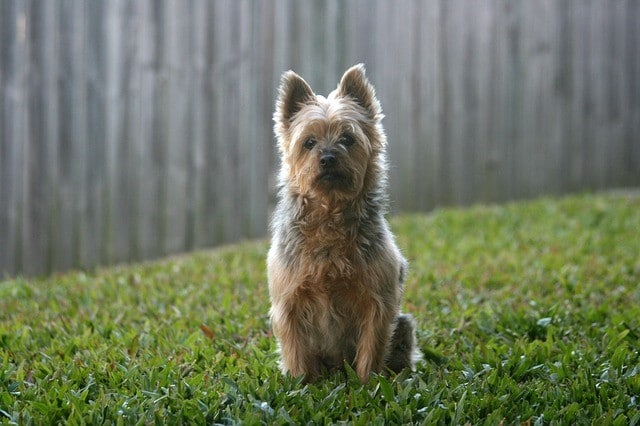

The Silky Terrier is often confused with the Yorkshire Terrier. The Silky Terrier was developed in Australia by crossing the Yorkie with the Australian terrier. It has a longer muzzle and larger ears than the Yorkshire Terrier.
In order to keep the coat in top condition, it is necessary to groom it daily with brush and comb for at least a quarter of an hour. The training of the Silky Terrier is happily very straight forward as they learn very quickly.
This is a very lively, cheerful dog which is eager to learn, full of energy, intelligent, affectionate, loyal and docile. In spite of its small size, they are vigilant and protective. Normally they are very loving with children.

This is the smallest of the three Poodle varieties and was bred down from its larger and older cousins in France during the eighteenth century.
The Toy Poodle is affectionate, smart, very clean and loves to play and be with its people. Miniature and Toy Poodles are very intelligent dogs, which, when handled properly, quickly learn what is required of them.
The Toy Poodle is a wonderful pet for older children who treat it with respect. It also makes a great therapy dog.


The ideal Pomeranian is so heavily coated the it becomes almost ball-shaped. The breed’s coat does best with daily brushing and its exercise needs are minimal.
The Pomeranian is a lively, boisterous dog which can be too brave. They are intelligent, eager to learn and very loyal to its family. The Pomeranian is also vigilant, energetic, has a delightful nature and does not cling to its owner.
Too much attention from children can make these dogs rather nervous. They usually get along with other dogs and household animals without a problem.



